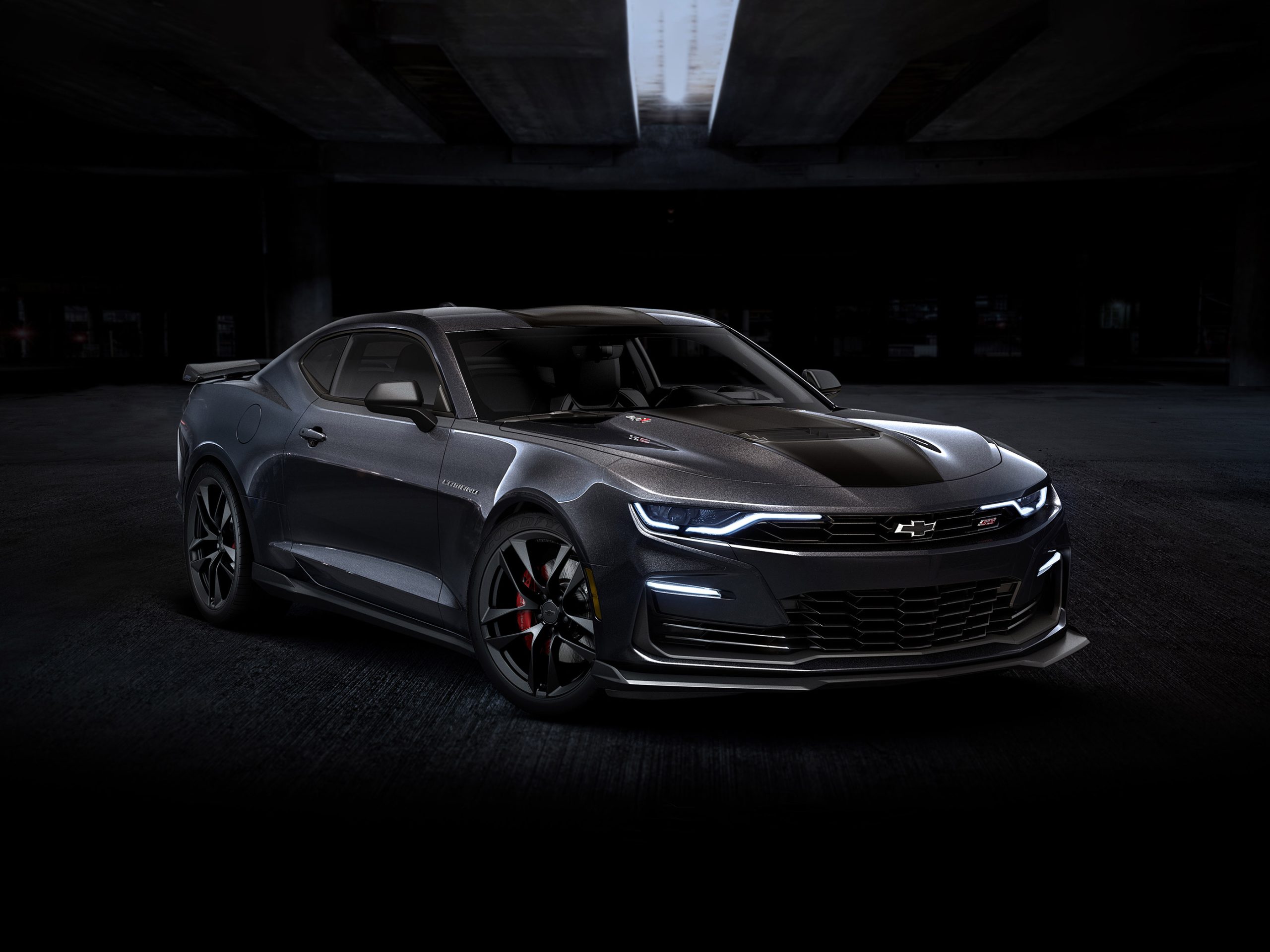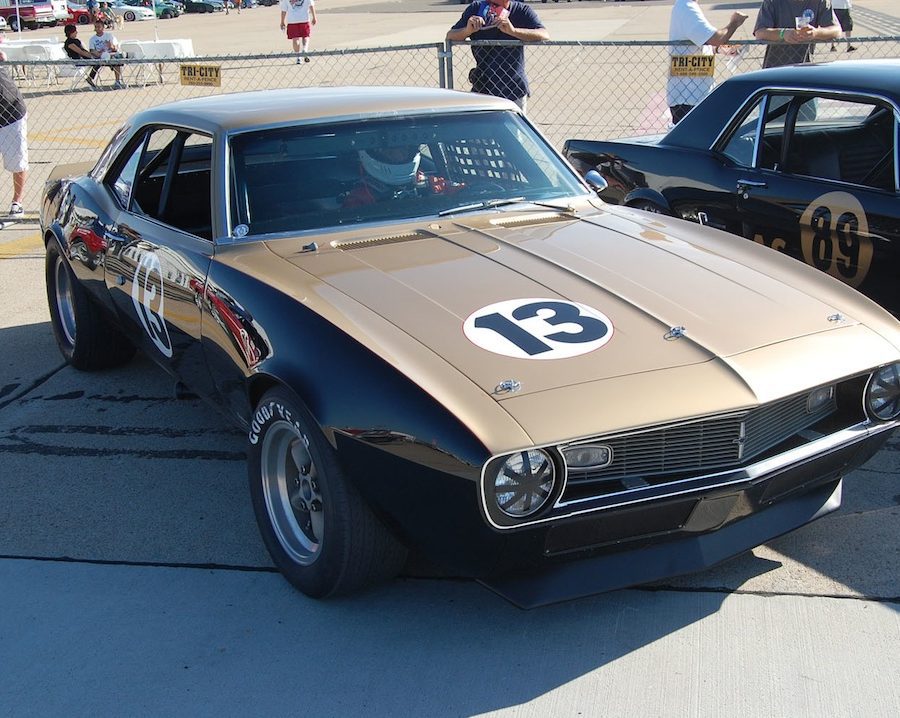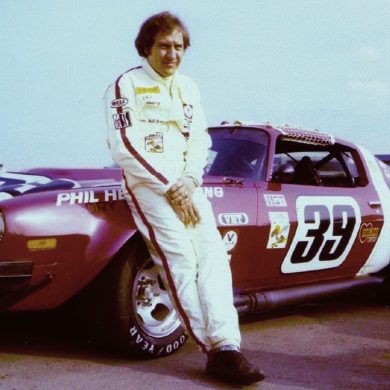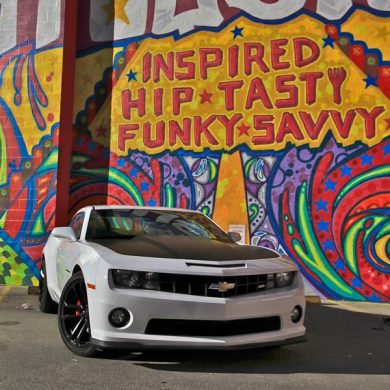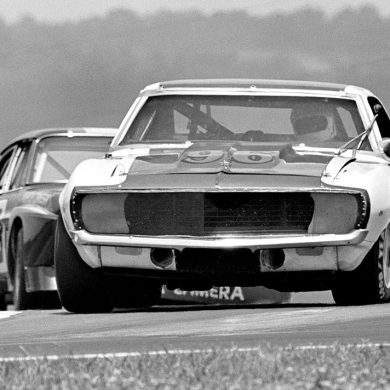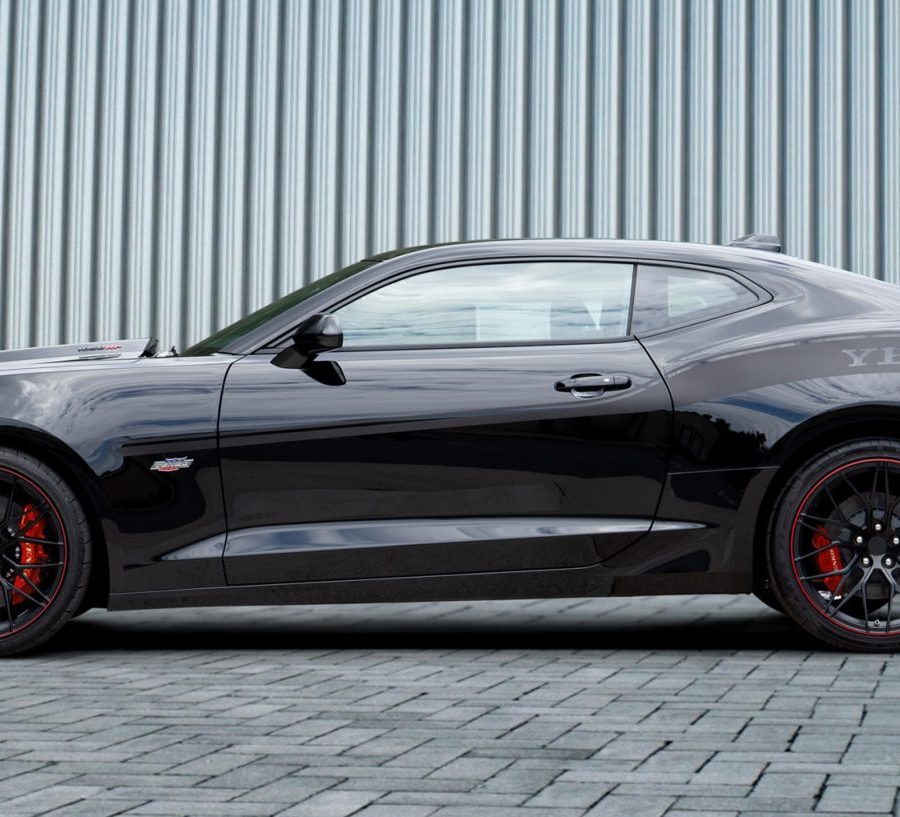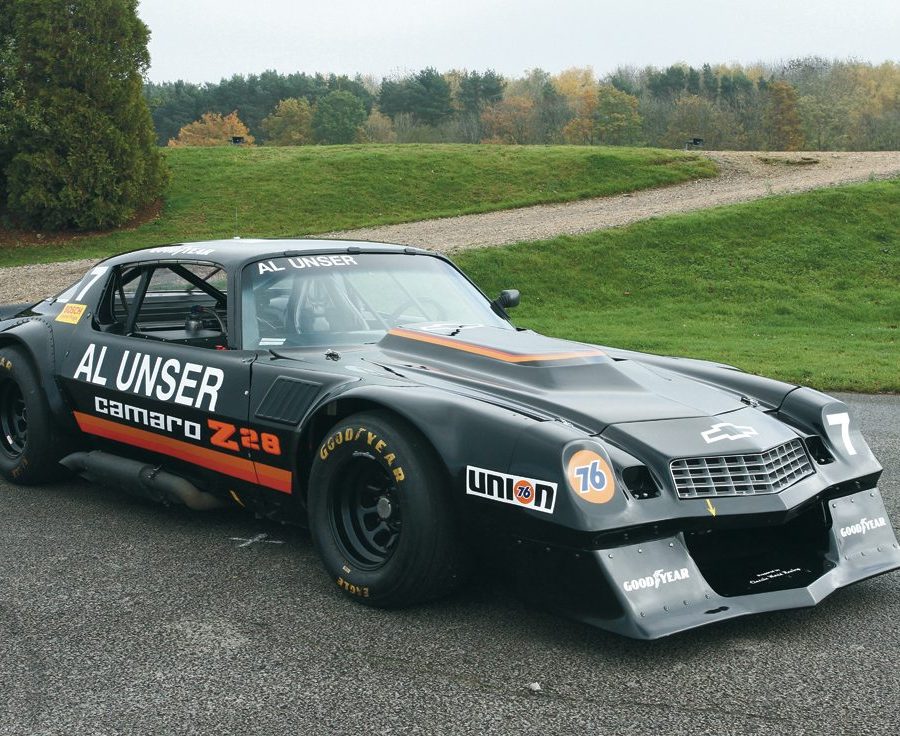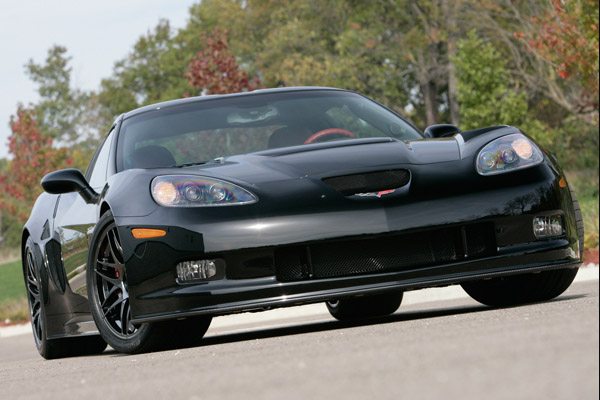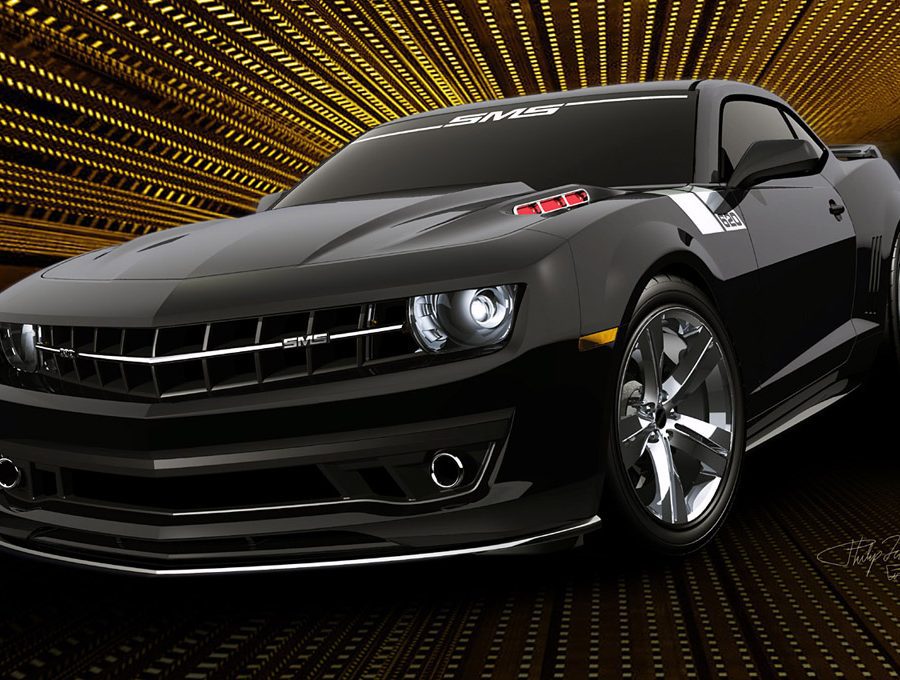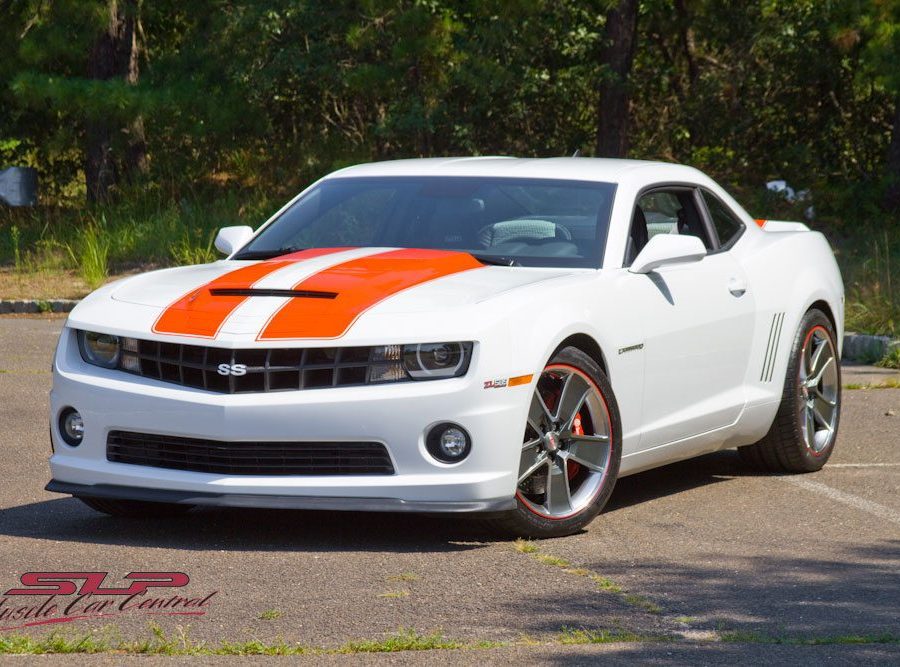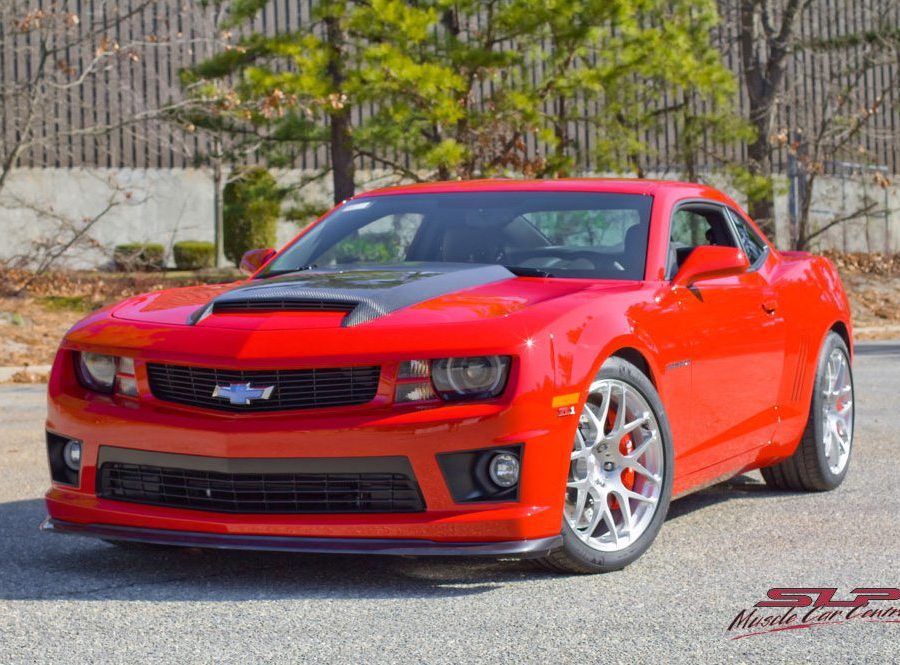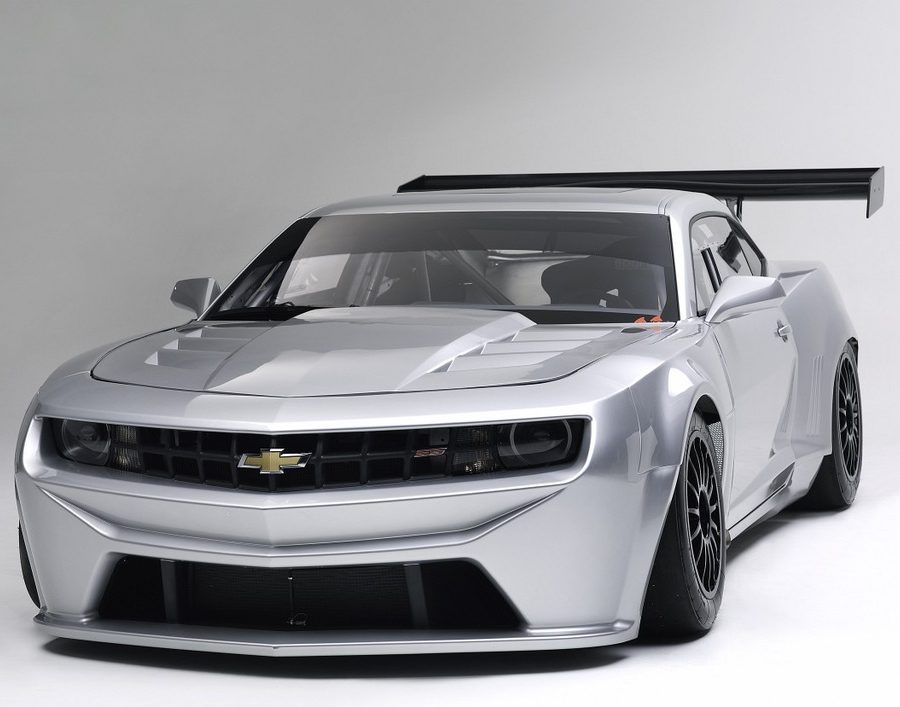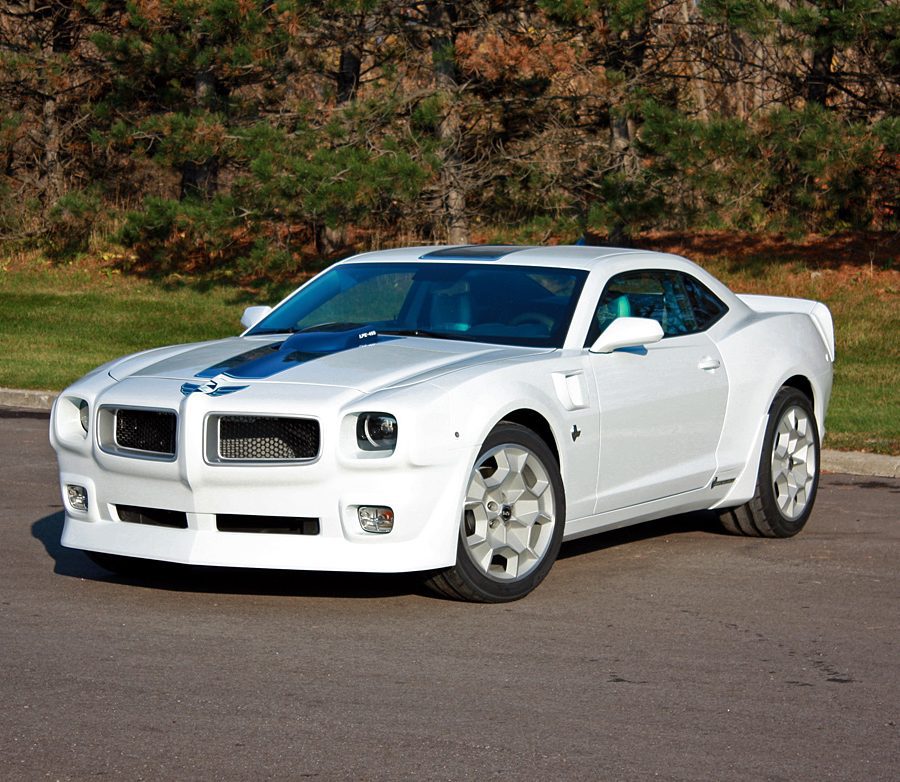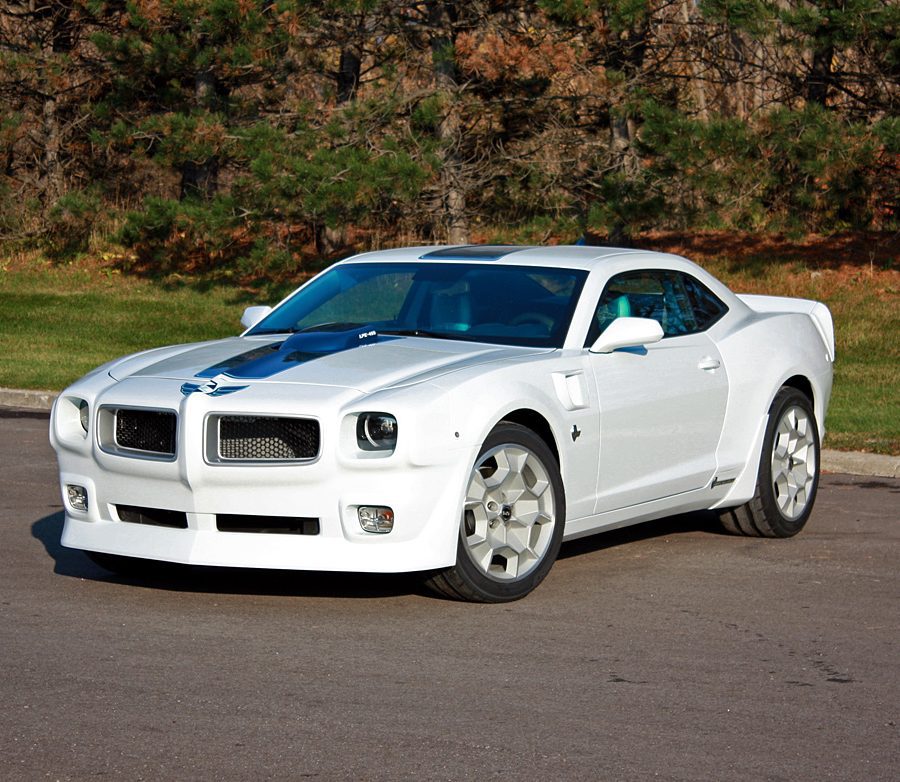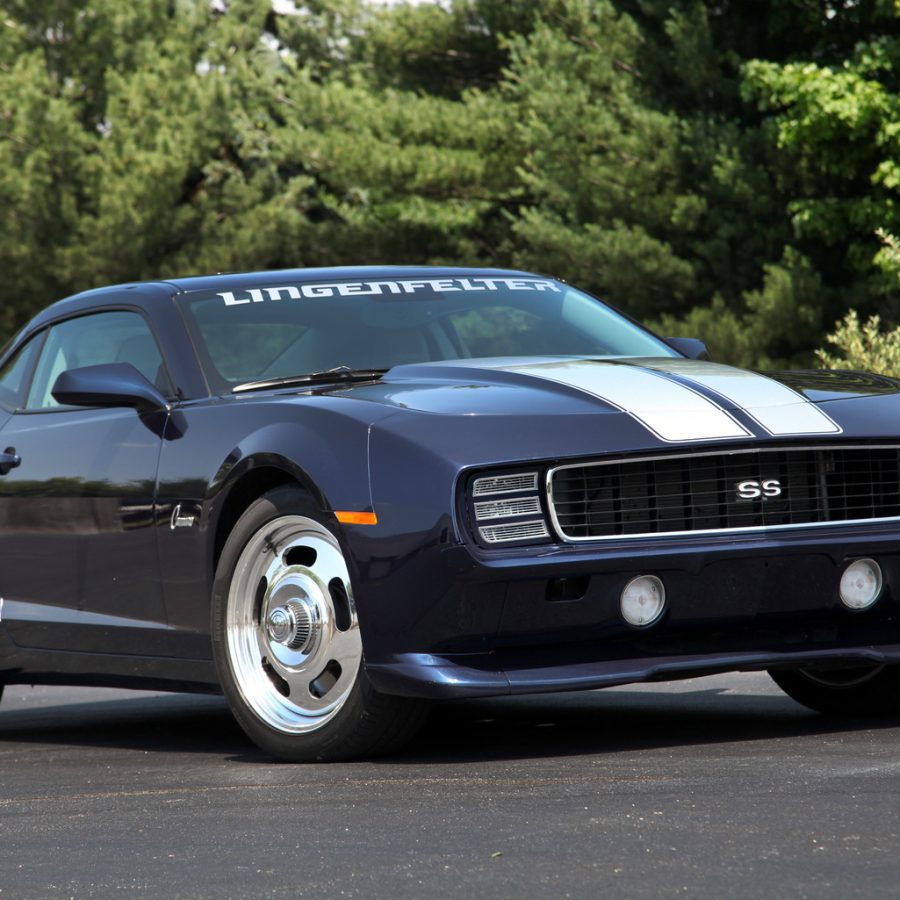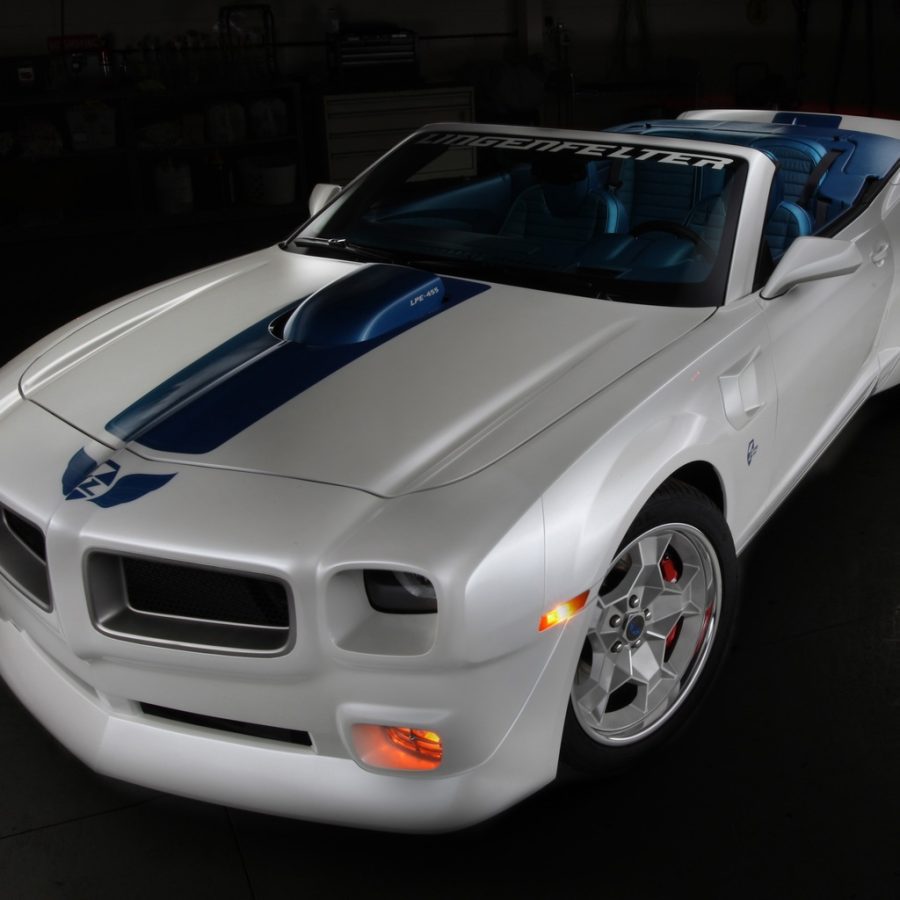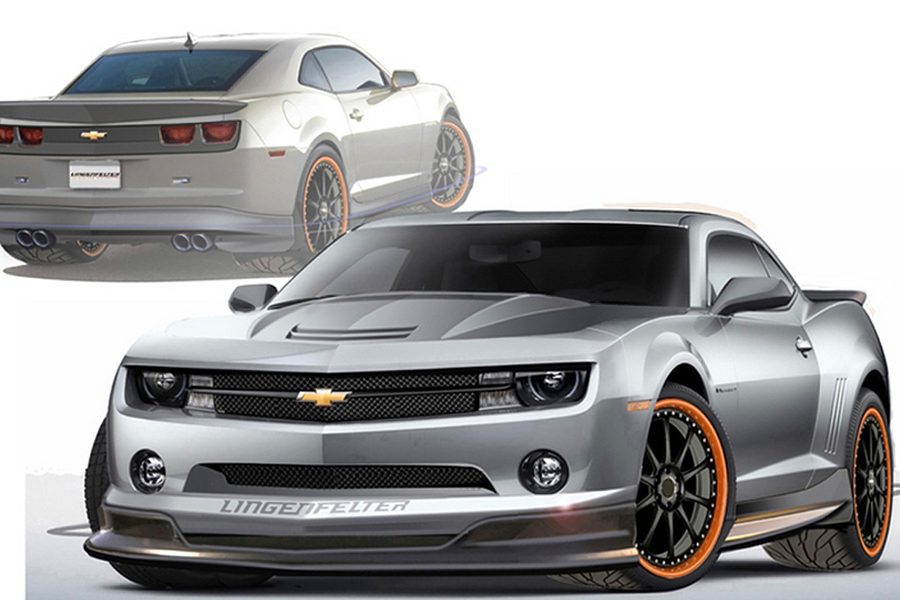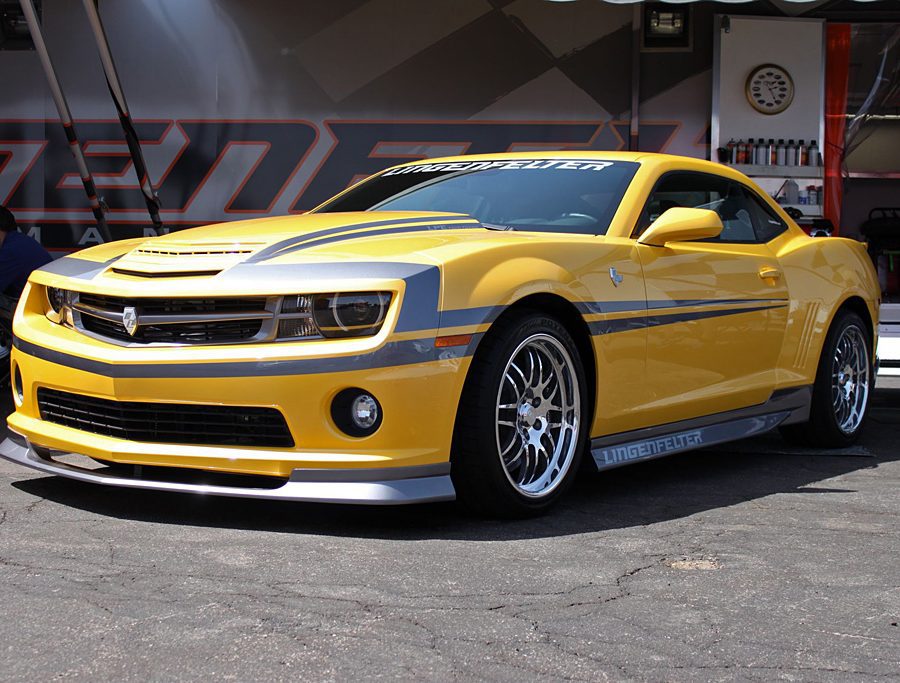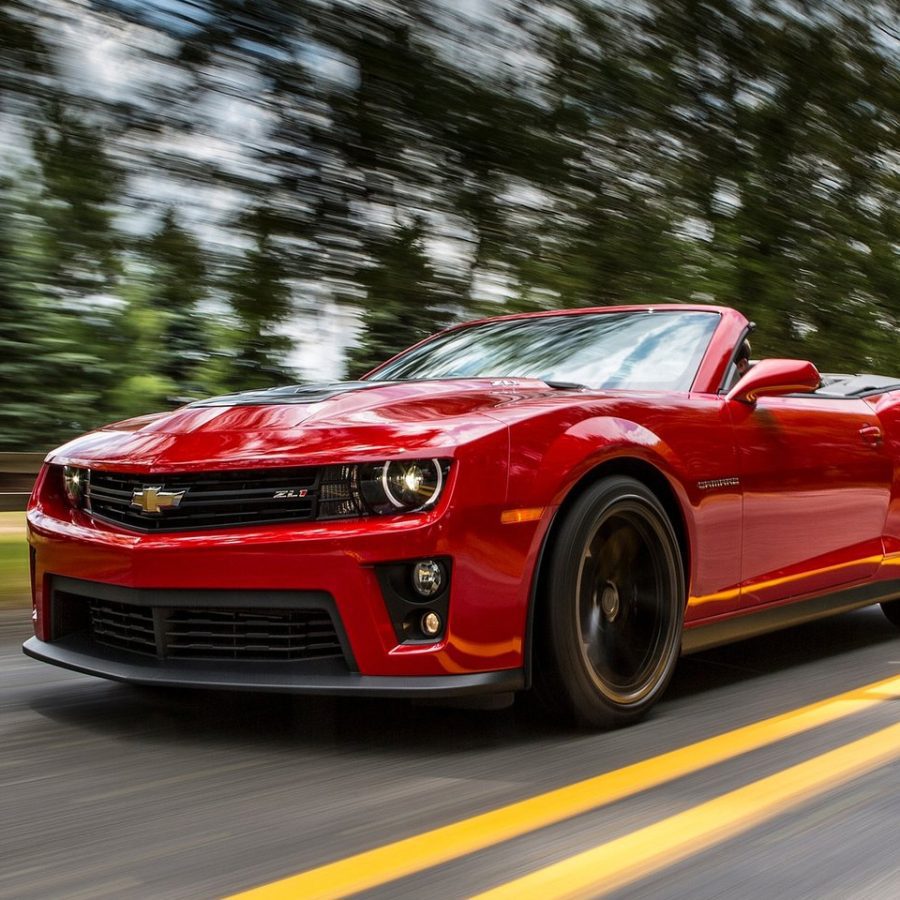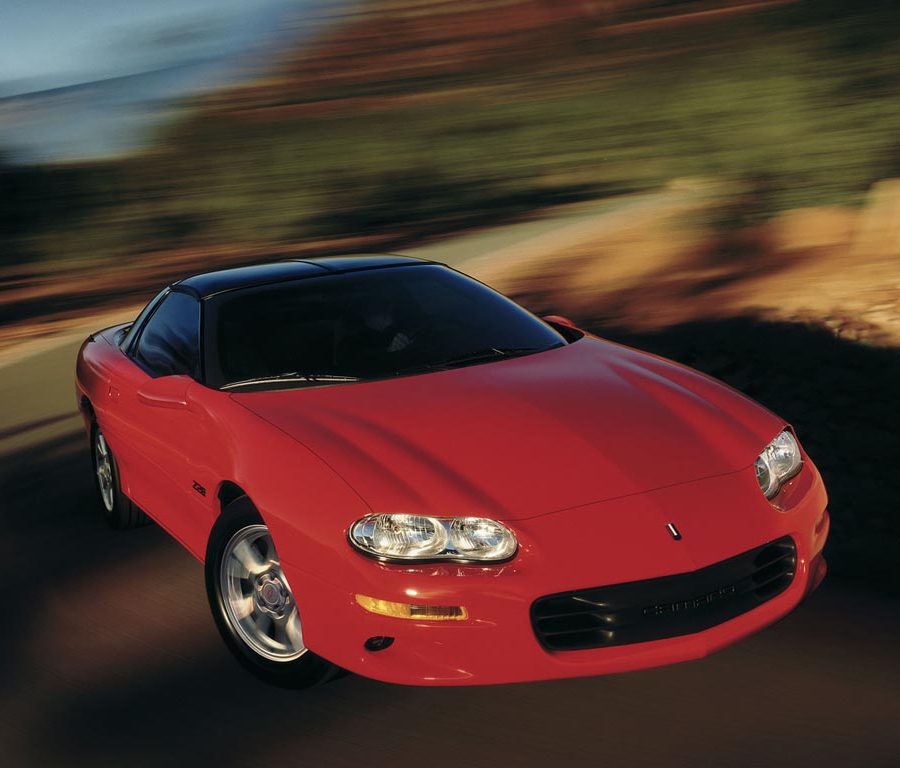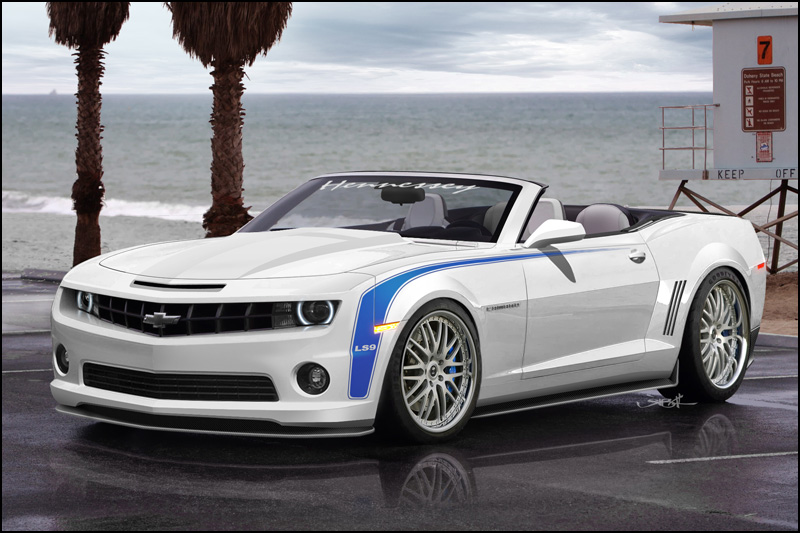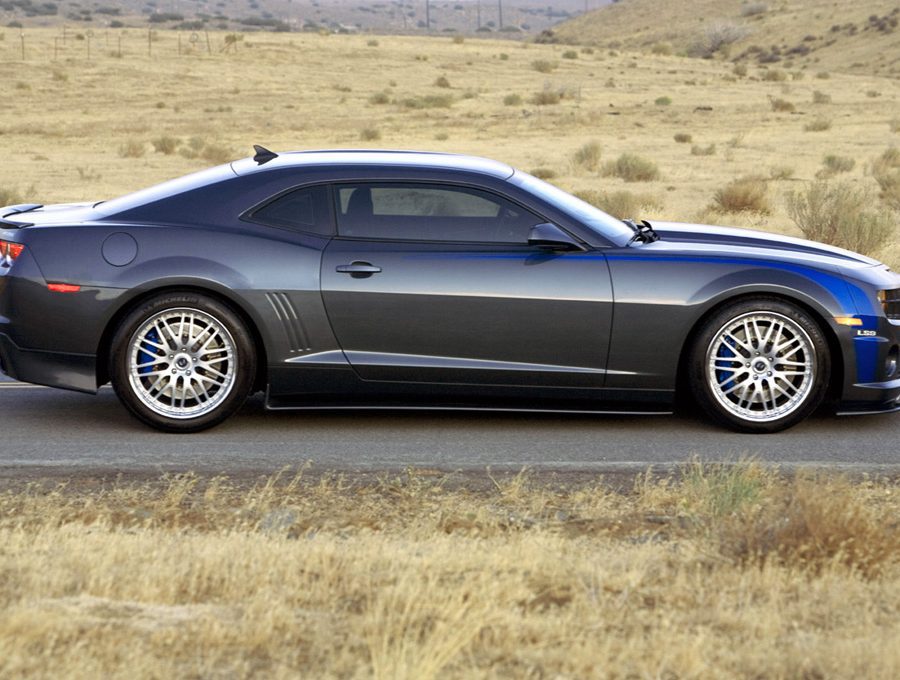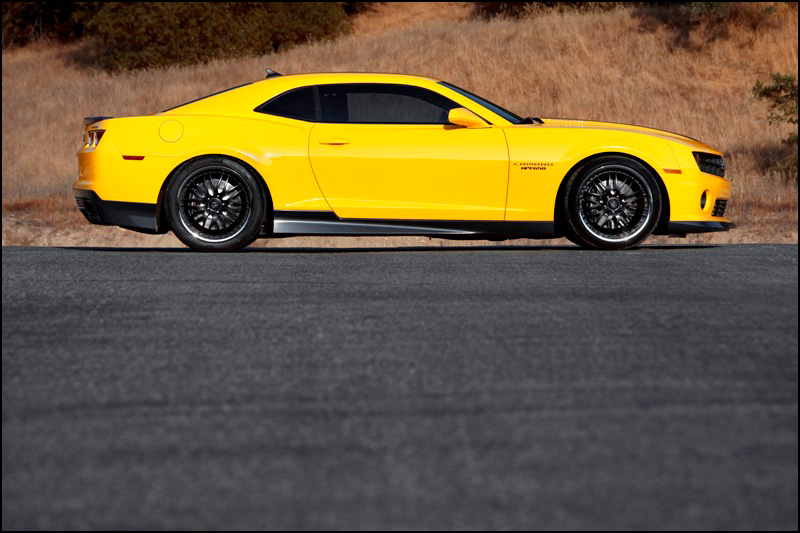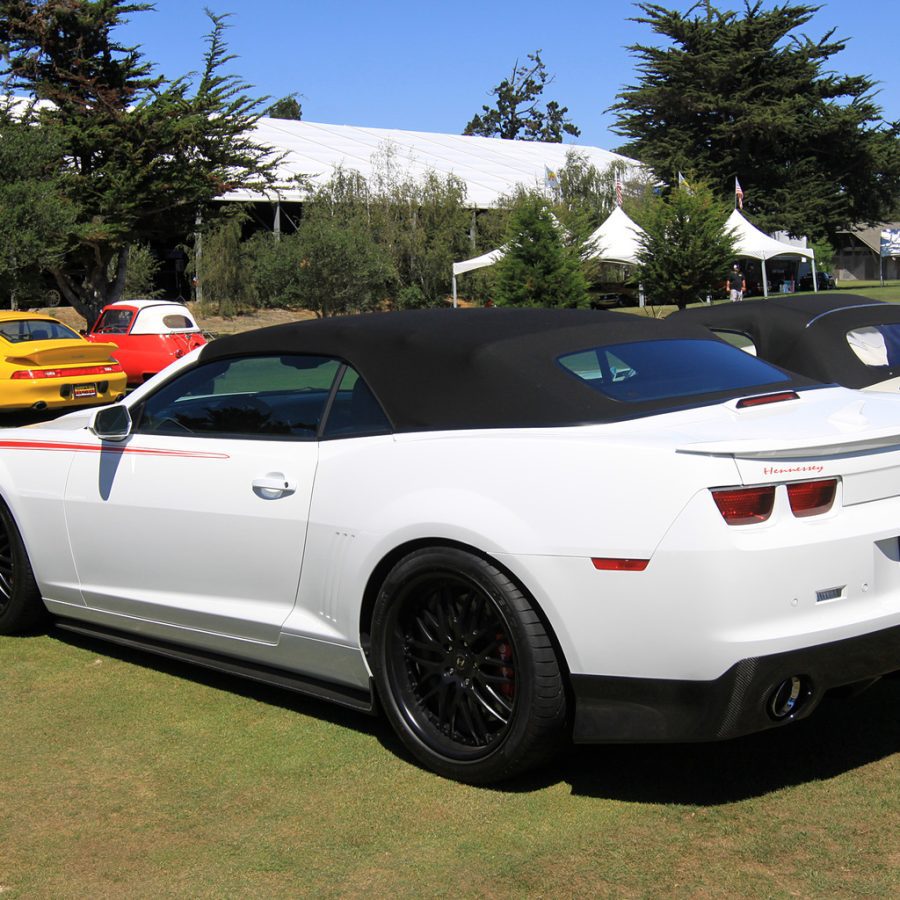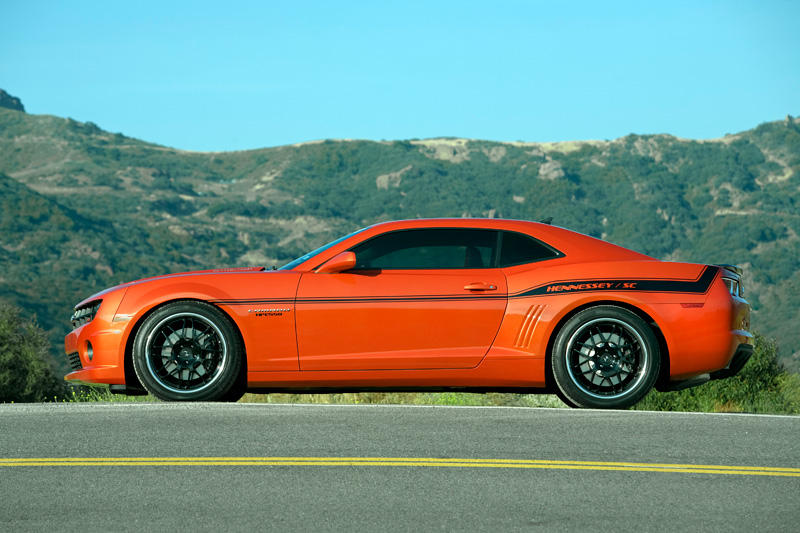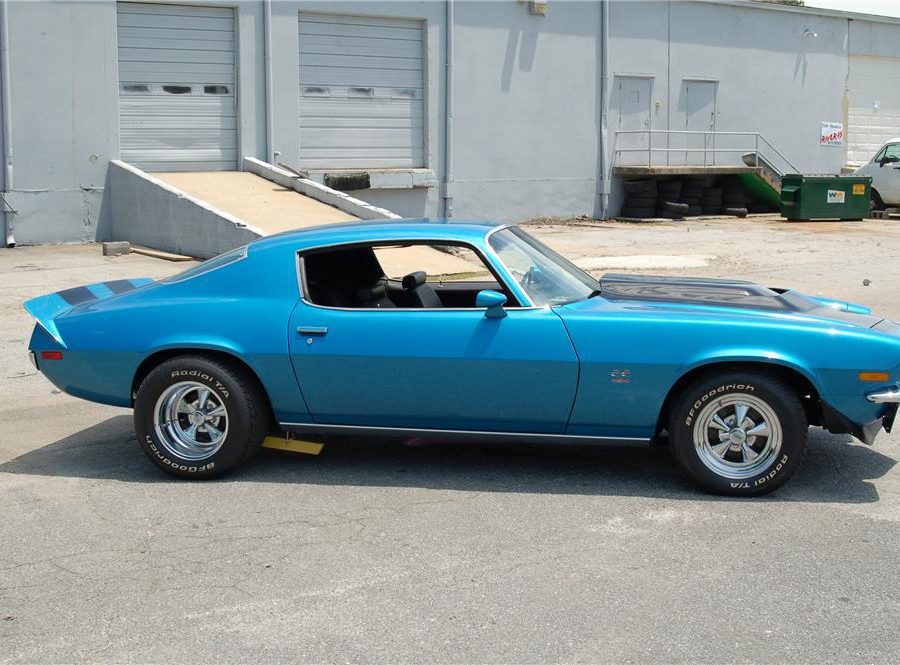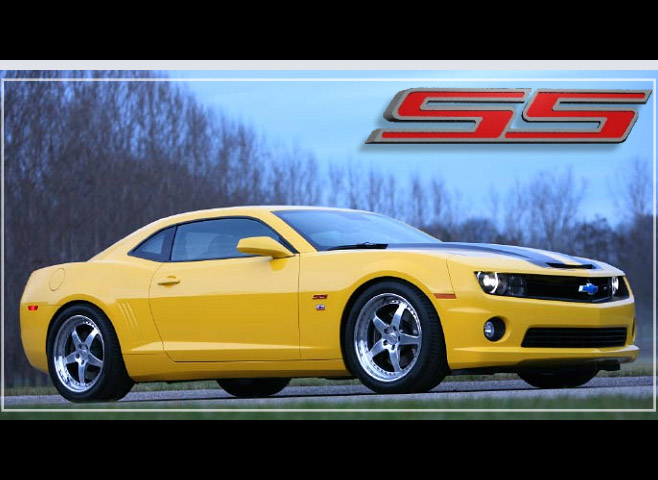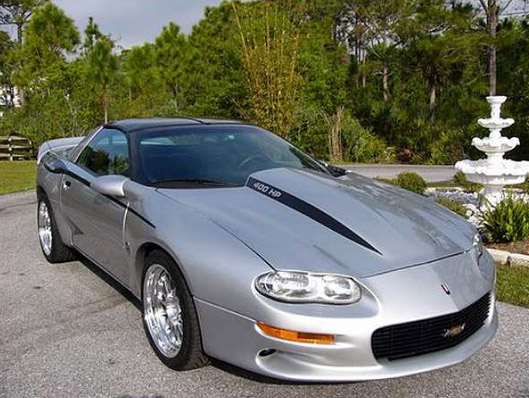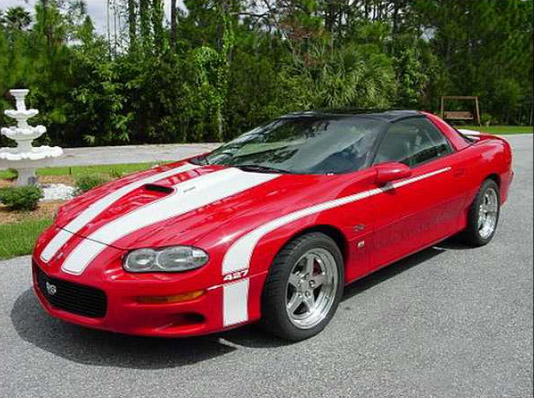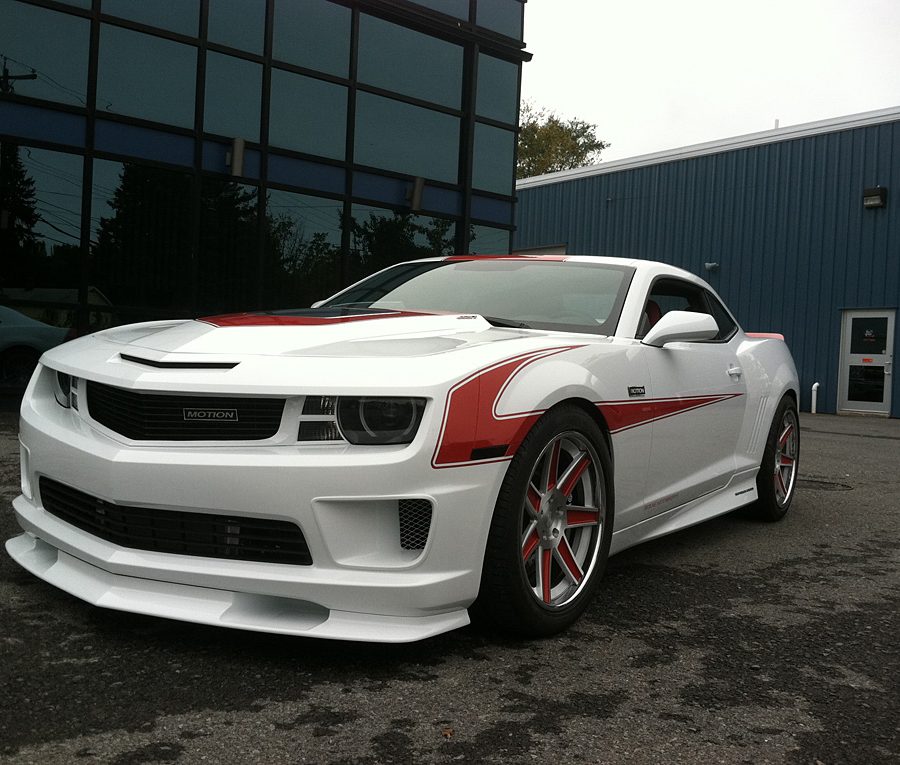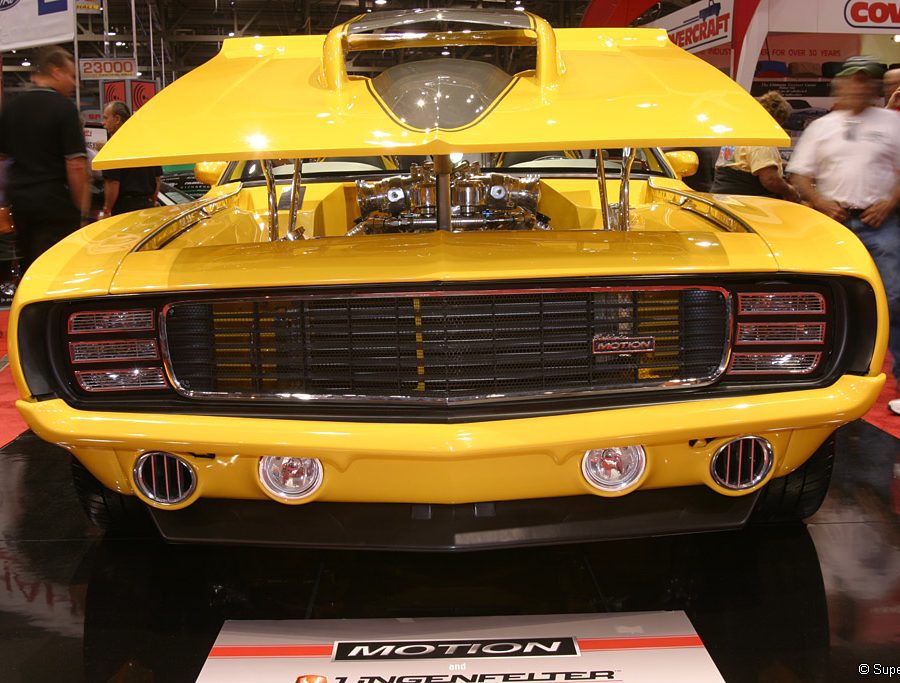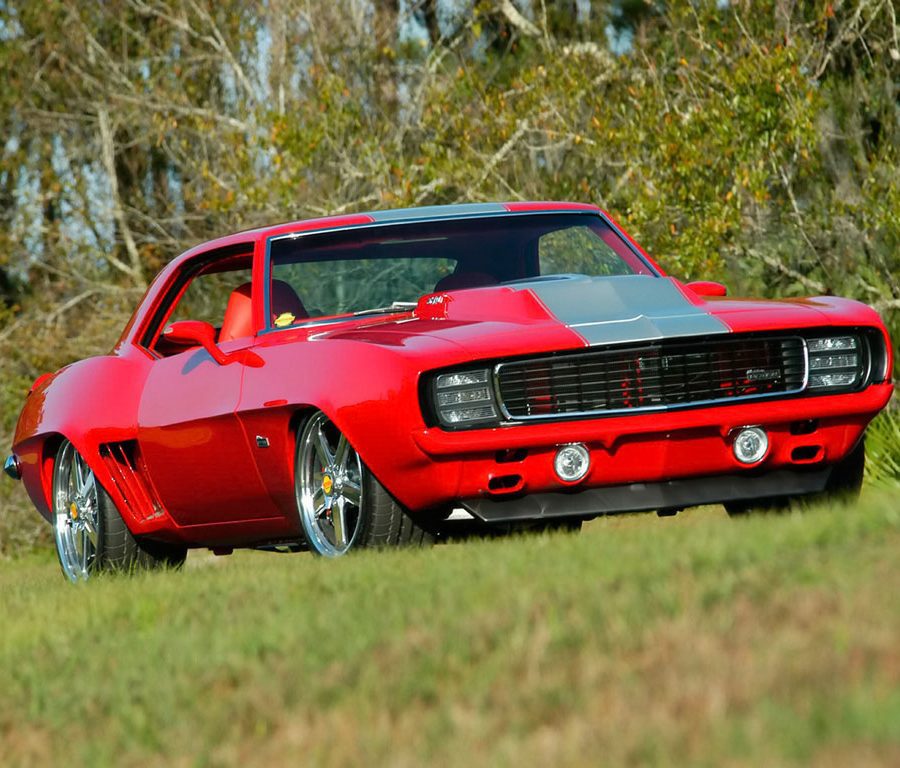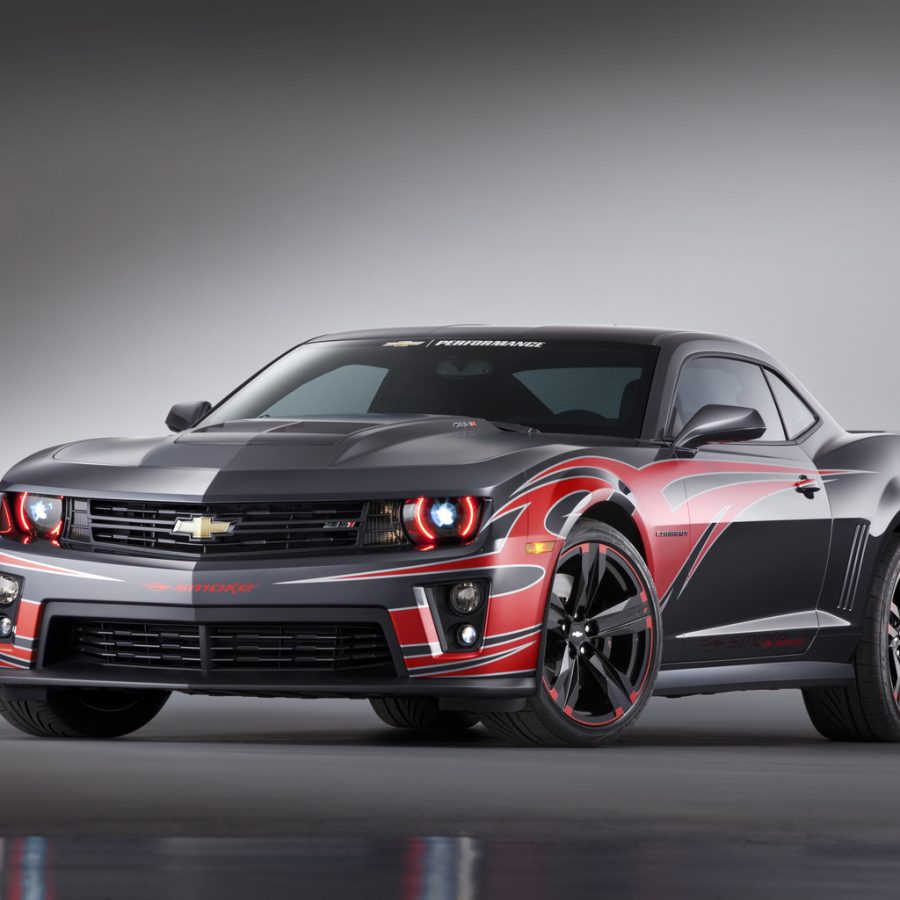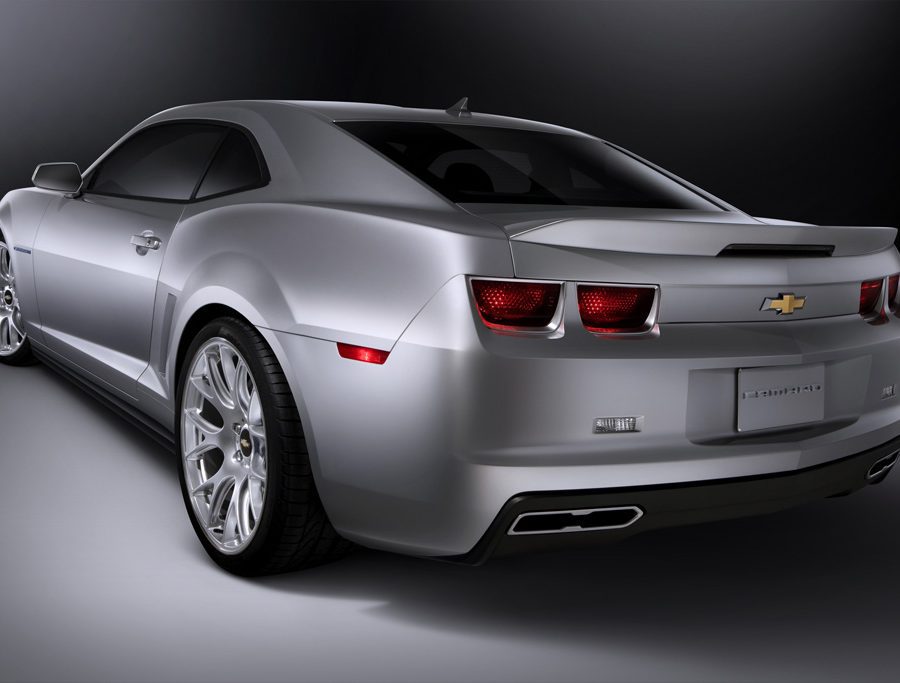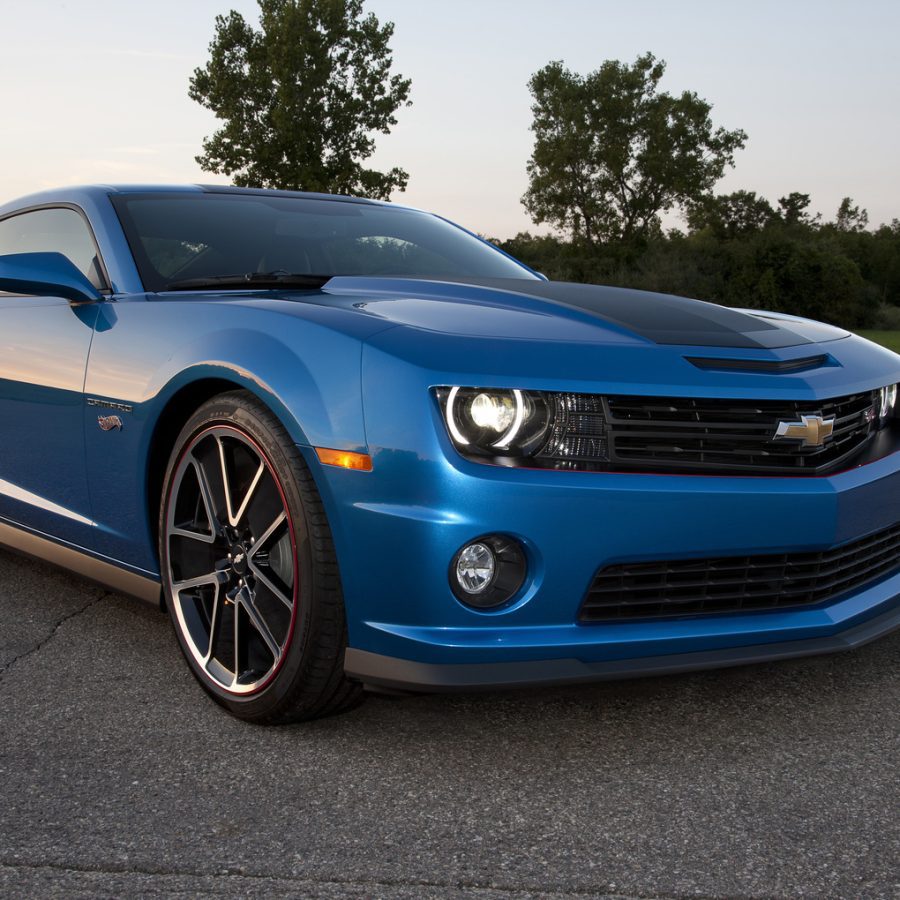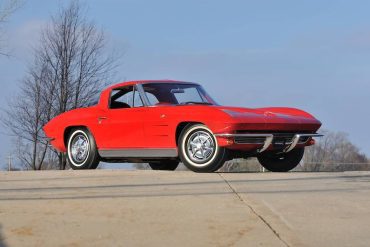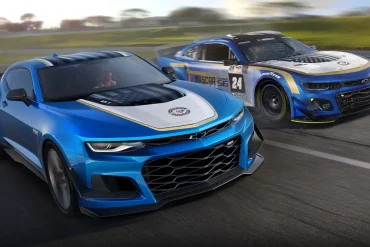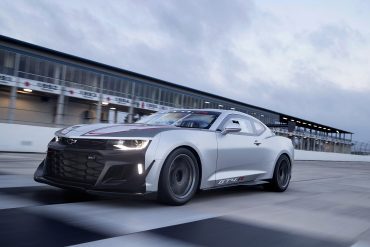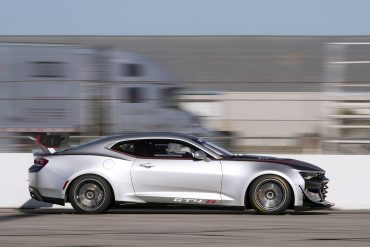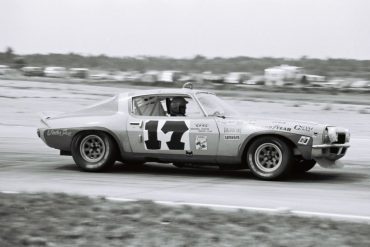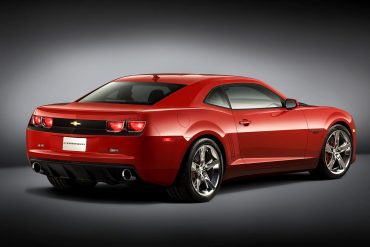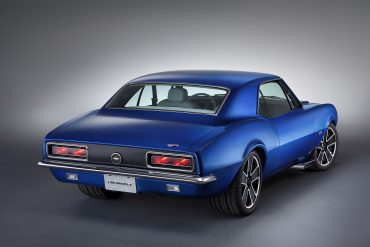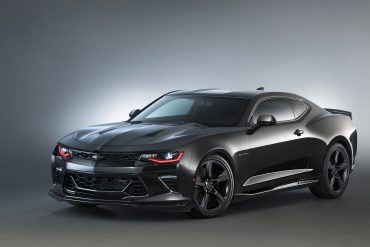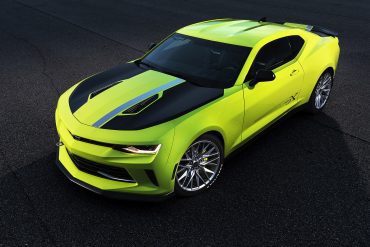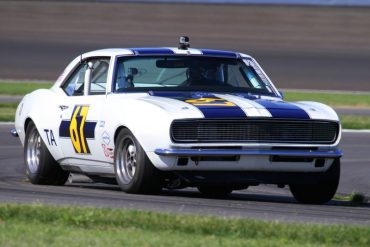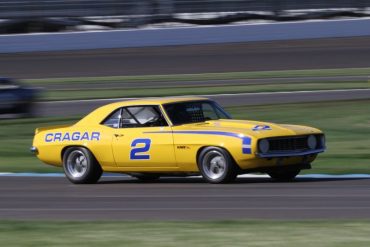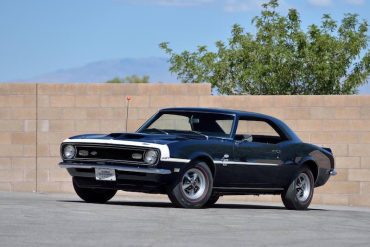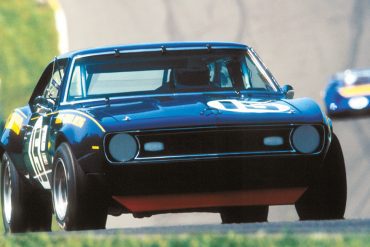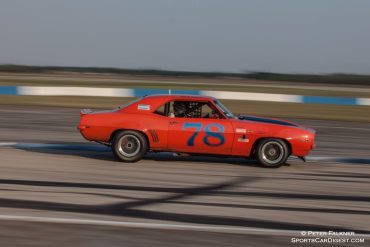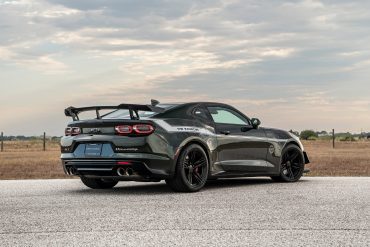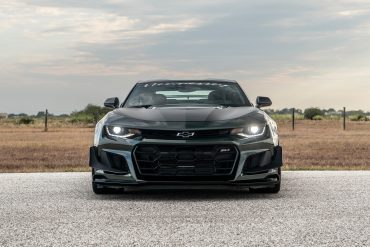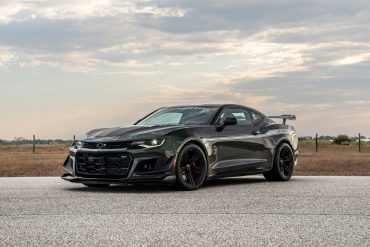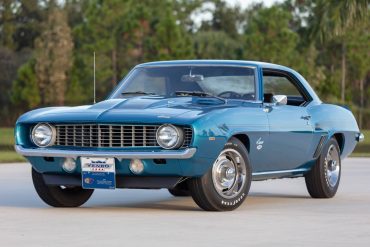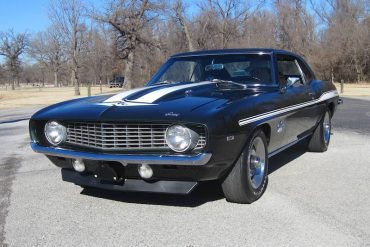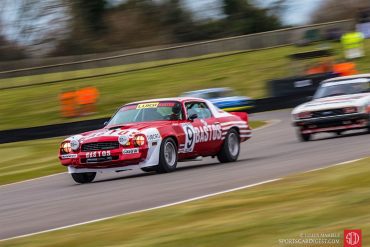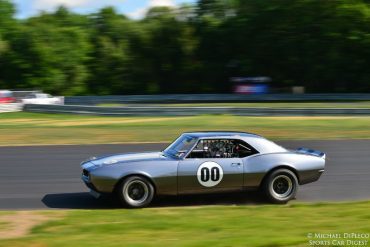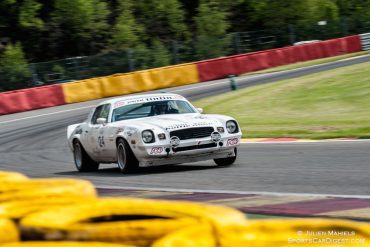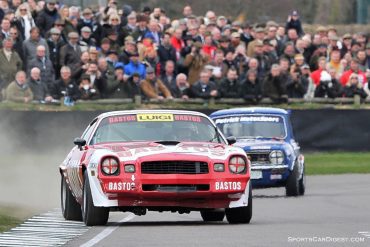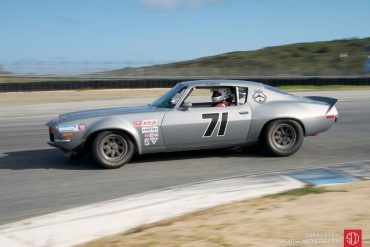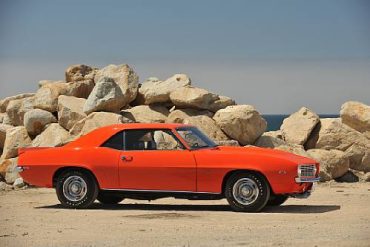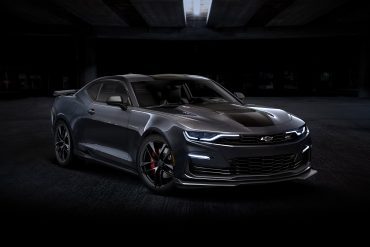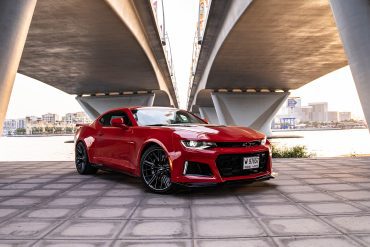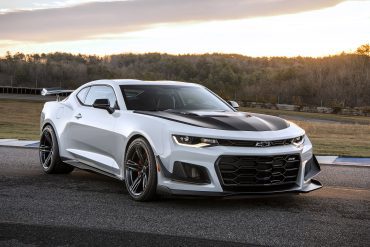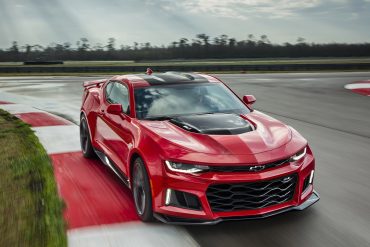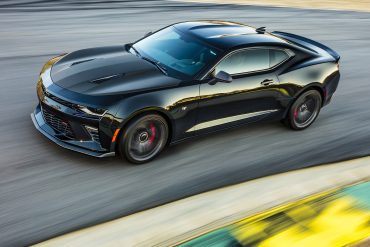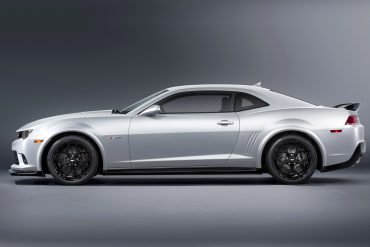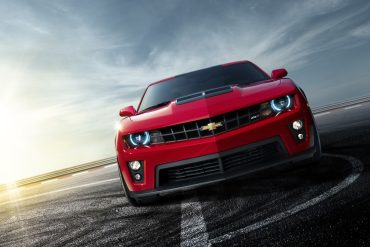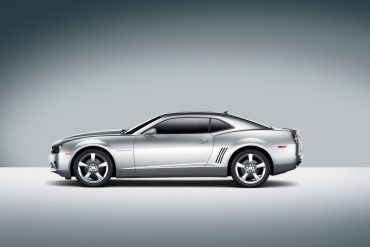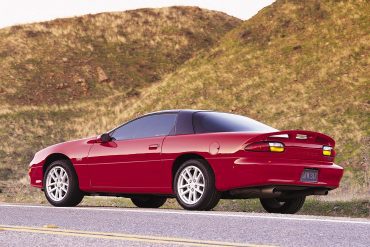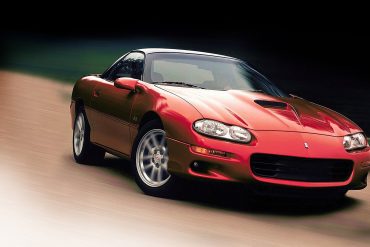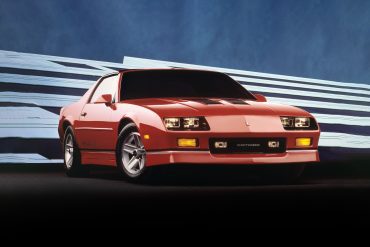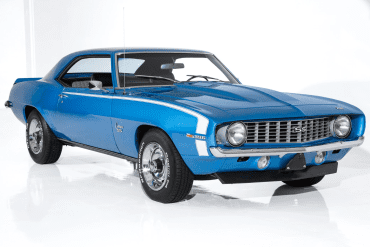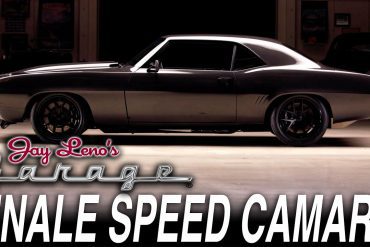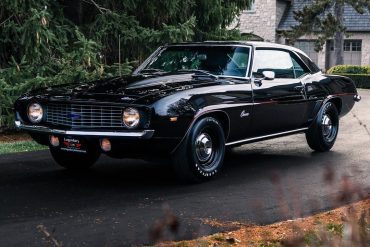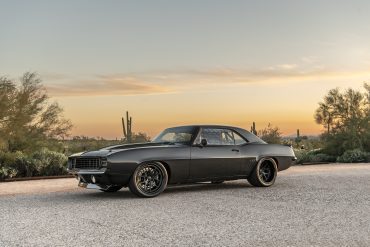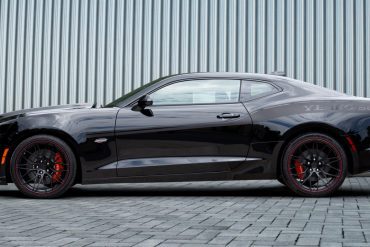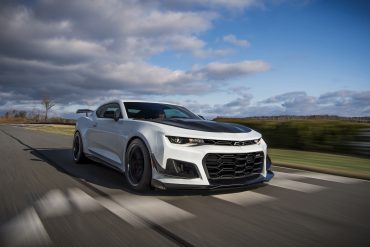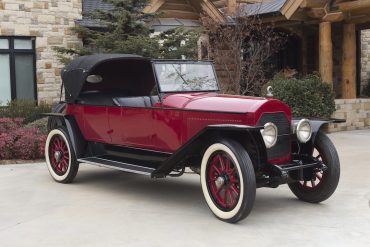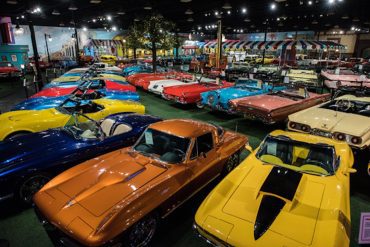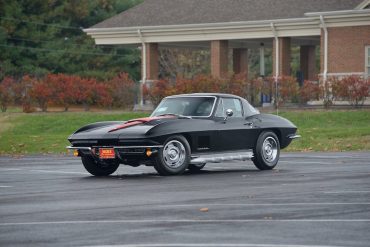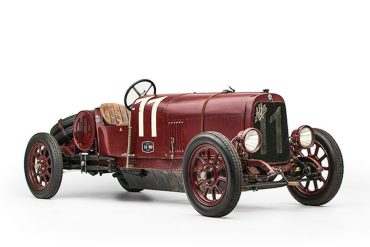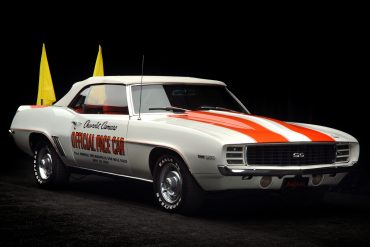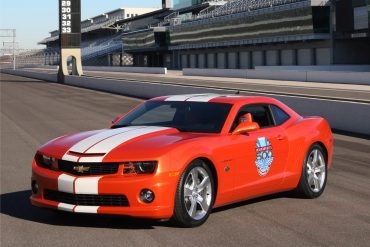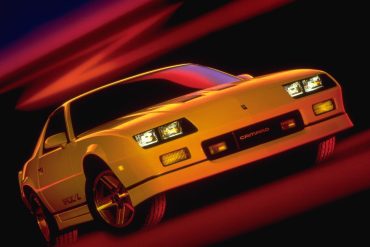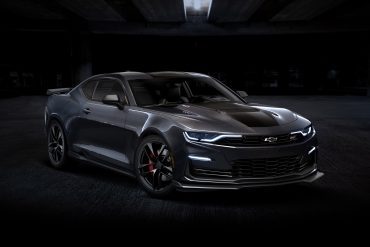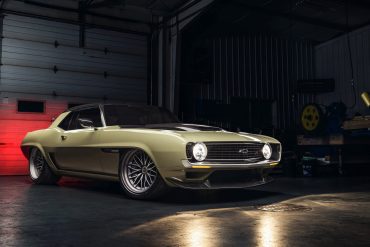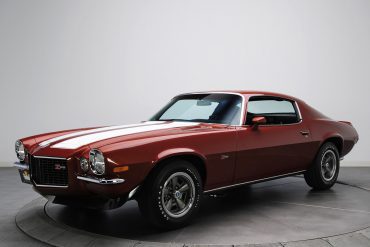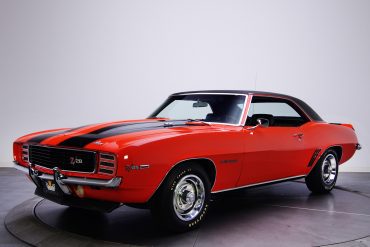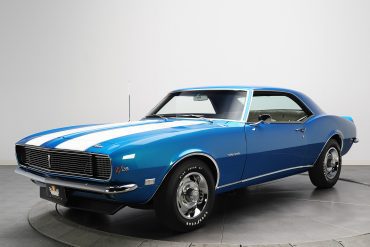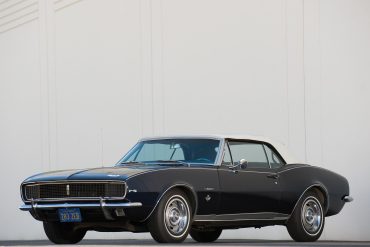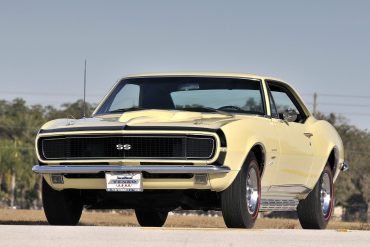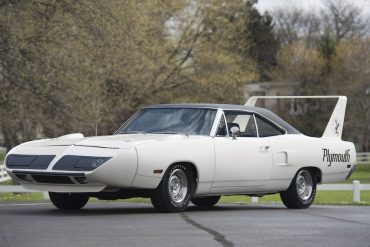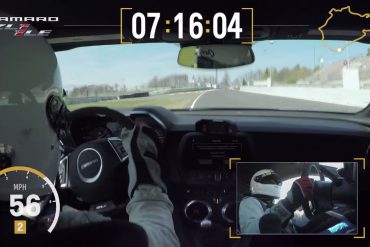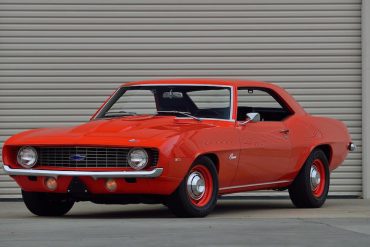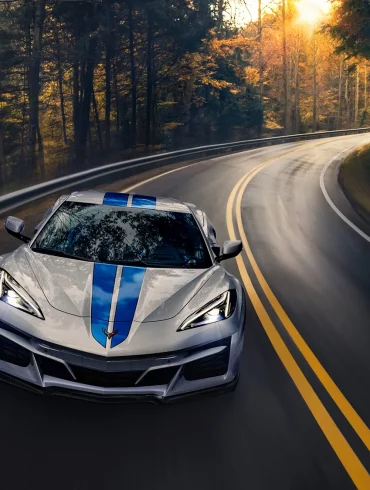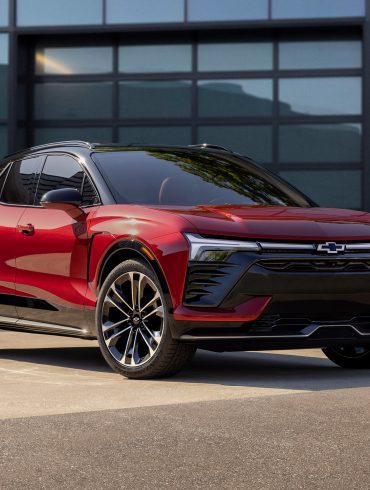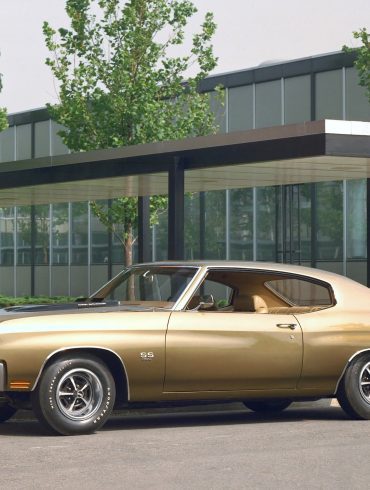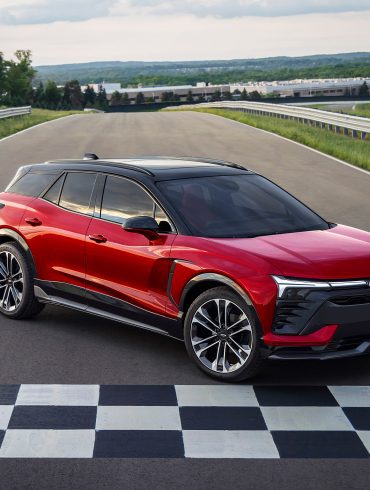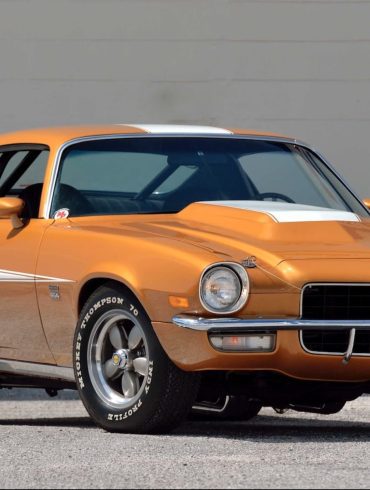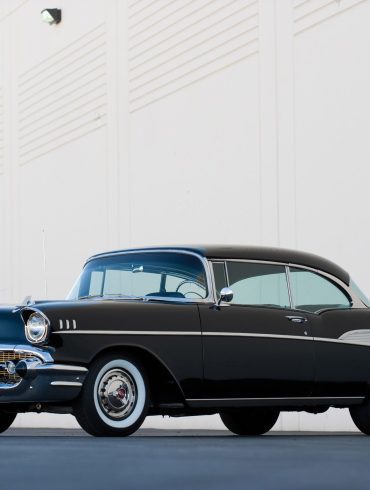Chevrolet Camaro
1966 - 2002 / 2009 - 2023
Every Generation. Every Model Variant. Every Year.
Overview / Model & Variant List / Featured Stories / Generations / Models In-Depth / Image Gallery / More Updates
Overview
Its origins began as a competitor to the Mustang, surviving the end of the muscle car era and also through the Oil Crisis of the ’70s. It dove into the performance revival of the 1980s and the tech boom of the 1990s, meeting an untimely death in the early 2000s. The Camaro had been able to survive for as long as it did by adapting to the changing automotive industry. After the reintroduction of the fifth-generation Camaro in 2010, the model continues to push the boundaries of Chevrolet’s performance abilities even today.
With the Ford Mustang already eating up the new pony car market, Chevrolet announced its rebuttal on September 26th, 1966, taking just two years to get the Camaro from design to dealership. A wide range of available factory options made the Camaro highly customizable, which enabled it to succeed in the new personal coupe market that the Mustang had taken by storm.
This first Camaro generation would take to the streets and the tracks with its Super Sport and Z/28 packages respectively. The Z/28 was dominant in the SCCA Trans Am racing series against its rival the Mustang Boss 302. This new pony car would mark the beginning of a whole new era of American muscle car icons.
1970 saw the introduction of the all new Second Generation Camaro. The 1st generation Camaro (1967 – 1969) was seen as a hasty response to the Ford Mustang. It was considered a compromise by some critics. There would be no compromises with this car.
This Camaro generation would go on to set sales records during the 1970s, finally surpassing the Mustang in popularity. While other personal coupes went on to disappear from production during the decade, the Camaro held on. Despite the declining performance of the times, Chevrolet had a winner that would run for 12 years.
After proving its worth in the muscle car market from 1967 through the early ’80s, the Camaro transitioned into its third generation in 1982. This was the generation that Chevrolet first fitted its Camaro model with factory fuel injection, a four-cylinder engine and a hatch-back rear end configuration along with a completely redesigned chassis. It would be the first time the Camaro did not have a front subframe or rear leaf spring suspension.
A 5-Speed manual transmission in 1983 was another first for this generation, as was the return of the 350 small block in 1987. A new performance model, the IROC-Z, debuted in 1985, named after the International Race of Champions. The new Camaro was an embodiment of its era and becoming more of a sports car than a muscle car. The third-generation Camaro continued for the next decade before it would be replaced.
Following the success of the third generation, in 1993 it was time once again for Chevrolet to roll out a new Camaro. The most significant changes to the F-body platform during this time were the switch to the new LT and later LS series small blocks that GM had developed. However, by 2002 lagging interest and sales forced GM to discontinue the Camaro.
By the late 00’s renewed interest brought the Camaro back from the grave for its fifth and sixth generations and into the modern era of high performance muscle cars, joining its rivals Mustang and Challenger. With each year, Chevrolet would continue to push the boundaries of performance and evolve the Camaro further. GM has announced that 2024 will be the last year for the Camaro as a car. Word is that it is going to come back as an SUV in 2025.
Basics
Generations
1st Generation (1967-1969)
2nd Generation (1970-1981)
3rd Generation (1982-1992)
4th Generation (1993-2002)
5th Generation (2010-2015)
6th Generation (2016-2024)
Did You Know?
The name "Camaro" has no real meaning. Despite theories about it being French for "friend" or "comrade", Chevy executives revealed it was simply picked because it sounded cool and started with a "C" (to match other Chevy models of the time).
It was designed in secret. The Camaro's development was kept under wraps to take the competition, especially Ford, by surprise.
The Camaro has outsold the Mustang in some years. While the Mustang is often thought of as the sales leader, the Camaro has had its moments of dominance.
"The Camaro Z28: Not for the faint of heart."
Chevrolet advertisement
Chevrolet Camaro Generations
There have been a total of six generations of Camaro since 1967, with the model going to be discontinued in 2024.
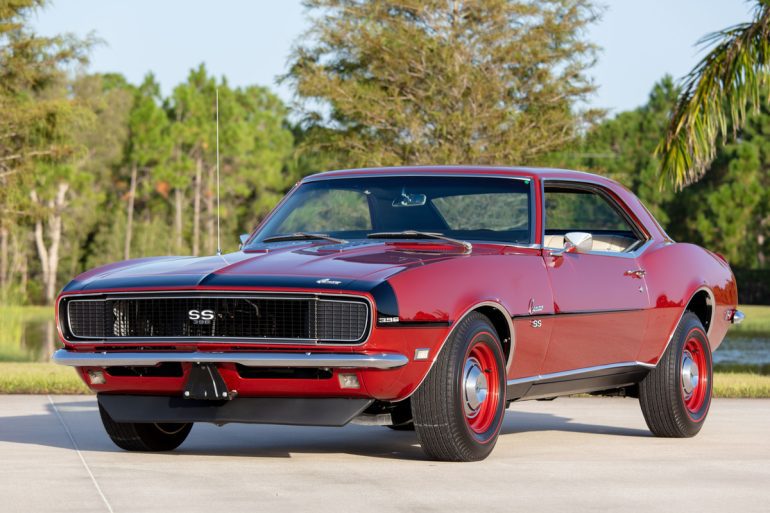
Camaro (1st Gen) Basics
Production: 1966–1969
Model years: 1967–1969
Designer: Henry Haga
Body style: 2-dr hardtop/conv.
Layout: FR layout
Platform: F-body
Engine: 3.8 L L26 I6
Engine: 4.1 L L22 I6
Engine: 4.6 L small-block V8
Engine: 4.9 L Z28 V8 (Z/28)
Engine: 5.0 L L14 V8
Engine: 5.4 L LF7/L30 V8
Engine: 5.7 L LM1/L65 V8
Engine: 5.7 L L48 V8 (SS350)
Engine: 6.5 L L34/L78/L89 V8
Engine: 7.0 L L72/ZL1 V8 (COPO)
Trans: 3-speed manual
Trans: 4-speed manual
Trans: 2-speed semi-auto
Trans: 2-speed auto
Trans: 3-speed auto
Wheelbase: 108 in (2,743 mm)
Length: 4,691 mm - 4,724 mm
Width: 1,842 mm - 1,880 mm
Height: 1,306 mm - 1,298 mm
Did You Know
Code-Name Panther: Before its release, the Camaro was originally called the "Panther."
1st Generation Camaro (1967 - 1969)
The late 1960s were a defining era in American automotive history, giving birth to a new breed of performance cars known as muscle cars. At the forefront of this revolution was the Chevrolet Camaro, introduced in 1967. The first-generation Camaro wasn't just Chevrolet's answer to the Ford Mustang; it was a bold declaration of style, power, and performance that would leave an indelible mark on the automotive landscape. Spanning from 1967 to 1969, this era of the Camaro blended innovative design, potent powertrains, and a driving experience that captured the essence of freedom and excitement.
Unveiling the Icon
The debut of the Camaro in 1967 was met with widespread acclaim. It showcased a sporty, aggressive design that was instantly appealing. The long hood, short deck, and sculpted body lines exuded a sense of speed and power, while the wide stance and aggressive front-end design made it unmistakably assertive. This was a car that looked just as good standing still as it did blazing down a drag strip.
Power and Performance
Under the hood, the first-generation Camaro offered an extensive selection of engines, catering to a wide spectrum of buyers, from those seeking economical daily drivers to speed enthusiasts craving maximum performance. The engine lineup included reliable inline-six options for the base models, but it was the V8 engines that truly defined the Camaro's muscle car status. Ranging from the small-block 327 to the powerful 396 cubic inch big blocks, the Camaro could be tailored to suit any level of performance desired. The pinnacle of this powertrain lineup was the legendary Z/28, a model specifically created to excel in the Trans-Am racing series, featuring a high-revving 302 cubic inch V8 designed to meet the series' engine displacement limitations.
Racing Pedigree
The Camaro quickly distinguished itself on the race track, especially with the Z/28 package, which was engineered for road racing dominance. The success of the Camaro in competitions like the SCCA Trans-Am series not only bolstered its reputation as a formidable performance machine but also solidified its status among the era's great muscle cars, capable of holding its own against the fiercest competition.
Style and Substance
Beyond its performance credentials, the first-generation Camaro was also notable for its interior design and customization options. The cabin featured a sporty yet comfortable environment, with an array of color choices, upholstery options, and luxury features that could transform the car from a bare-bones racer to a sophisticated cruiser. The Camaro's exterior could be equally personalized, with an array of paint colors, stripe packages, and additional options like the Rally Sport package, which included distinctive hideaway headlights and added a touch of elegance to the car's aggressive demeanor.
A Lasting Legacy
The first-generation Camaro's three-year run set the foundation for a legacy that continues to thrive today. It encapsulated the spirit of an era, a time when cars were about more than just transportation; they were about expression, excitement, and the freedom of the open road. Today, these early Camaros are revered by collectors and enthusiasts alike, not just for their beauty and performance but for the indelible mark they left on automotive culture. They represent a time when ingenuity and passion led to the creation of cars that were more than machines—they were symbols of an unforgettable period in American history.
As we look back on the first-generation Chevrolet Camaro, it's clear that it was much more than just Chevrolet's competitor to the Mustang. It was a car that captured the imagination of a generation, combining breathtaking design, thrilling performance, and a versatility that appealed to a wide audience. Its enduring appeal is a testament to its significance, a reminder of an era when the roar of a V8 and the allure of a beautifully designed car could ignite the spirit of adventure and freedom in everyone who got behind the wheel.
2nd Generation Camaro (1970 - 1981)
The second-generation Chevrolet Camaro, which spanned from 1970 to 1981, is a storied chapter in the legacy of American muscle cars. This era witnessed the Camaro mature into a more refined, sophisticated, and potent machine, navigating through a decade of significant automotive industry changes, including stringent emissions standards and the fuel crisis. Despite these challenges, the second-generation Camaro managed to captivate enthusiasts with its blend of performance, style, and innovation.
A Bold New Design
The 1970 Camaro marked a radical departure from the first generation, introducing a sleek, aerodynamic body that was both elegant and aggressive. Its design was influenced by European sports cars, evident in its long hood, short deck, fastback silhouette, and distinctive, wide stance. This new Camaro was more than just a muscle car; it was a statement of automotive design, combining sportiness with a level of sophistication previously unseen in American performance cars.
Performance Adaptations
Initially, the second-gen Camaro continued the muscle car tradition with potent powertrains, including the formidable big-block V8s and the high-revving LT-1, a 350 cubic inch V8 that became a legend in its own right. The Z28 model, revived in 1970 after a brief hiatus, returned as the pinnacle of Camaro performance, boasting a powerful V8, a sport-tuned suspension, and distinctive racing stripes and badging.
However, as the decade progressed, the Camaro faced the challenges of new emissions regulations and the energy crisis. Power figures began to decline, and Chevrolet had to find a balance between performance and compliance with new standards. Despite these obstacles, the Camaro continued to offer respectable performance and adaptability through engine options and tuning.
Technological and Comfort Advancements
The second-generation Camaro wasn't just about looks and speed; it also saw significant advancements in technology and comfort. The interior was redesigned to offer a more driver-focused cockpit, improved ergonomics, and higher quality materials, reflecting the evolving expectations of consumers who desired both performance and comfort. Options like air conditioning, power windows, and upgraded sound systems enhanced the driving experience, making the Camaro more appealing to a broader audience.
Cultural Icon and Motorsport Hero
Throughout its run, the second-generation Camaro remained a prominent figure in American car culture, embodying the spirit of the era's automotive passion and performance. It continued to make its mark in motorsports, particularly in road racing and drag racing, where its performance and adaptability shone. The Camaro's participation in the International Race of Champions (IROC) series further cemented its reputation, with the IROC-Z model in later years commemorating this racing heritage.
Legacy and Enduring Appeal
By the time production ended in 1981, the second-generation Camaro had solidified its place in the pantheon of classic American cars. It represented a period of transition, innovation, and resilience in the face of industry-wide challenges. Today, these Camaros are celebrated for their unique blend of 70s-era aesthetics, evolving performance capabilities, and their significant role in the muscle car narrative.
Collectors and enthusiasts cherish the second-generation Camaro for its bold design, historical significance, and the sense of nostalgia it evokes. It stands as a testament to a transformative era in the automotive world, where the essence of American muscle adapted to a changing landscape without losing its soul.
Reflecting on the second-generation Chevrolet Camaro offers us more than a glimpse into automotive history; it provides insight into a decade of innovation, adaptation, and enduring passion for performance. It reminds us of a time when cars were not just modes of transportation but expressions of identity and freedom, capturing the spirit of an era that continues to resonate with car enthusiasts around the world.
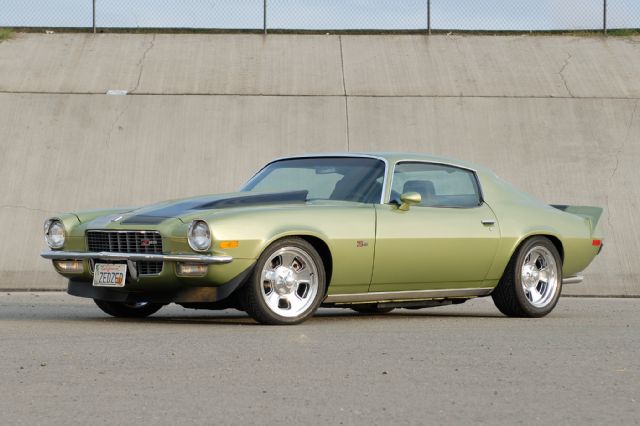
Camaro (2nd Gen) Basics
Production: 1970–1981
Model years: 1970–1981
Designer: Henry Haga
Body style: 2-door coupé
Layout: FR layout
Platform: GM F platform
Engine: 3.8 L 90-degree V6
Engine: 3.8 L Straight-6 I6
Engine: 4.1 L Straight-6 I6
Engine: 5.0 L LG3 V8
Engine: 5.7 L L65 V8
Engine: 5.7 L LM1 V8
Engine: 5.7 L LT-1 V8
Engine: 5.7 L L82 V8
Engine: 6.5 L L78 V8
Engine: 6.6 L Small-block V8
Trans: 2-speed auto
Trans: 3-speed auto
Trans: 3-speed manual
Trans: 4-speed manual
Wheelbase: 2,743 mm
Length: 4,775 mm
Width: 1,890 mm
Height: 1,273 mm
Curb weight: 1,501 kg
Did You Know
The second generation Camaro took cues from cars like the Ferrari 250 GTO, giving it a sleeker look.
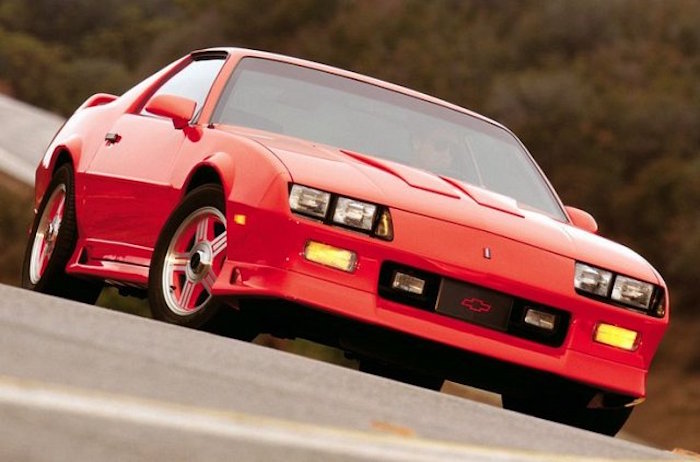
Camaro (3rd Gen) Basics
Production: 1981–1992
Model years: 1982–1992
Designer: Jerry Palmer
Body style: 2-dr liftback/conv.
Layout: FR layout
Platform: F-body
Engine: 2.5 L LQ8/LQ9 I4
Engine: 2.8 L LC1 V6 ('82–'84)
Engine: 2.8 L LB8 V6 ('85–'89)
Engine: 3.1 L LH0 V6 ('90-'92)
Engine: 5.0 L LU5/LG4/L69/L03/LB9 V8
Engine: 5.7 L L98 V8
Trans: 4-speed manual
Trans: 5-speed manual
Trans: 3-speed auto
Trans: 4-speed auto
Wheelbase: 2,565 mm
Length: 4,877 mm - 4,890 mm
Width: 1,850 mm
Height: 1,275 mm - 1,283 mm
Curb weight: 1,400–1,525 kg
Did You Know
The third-gen was much more aerodynamic than its predecessors, improving performance and fuel efficiency.
3rd Generation Camaro (1982 - 1992)
The 3rd generation Chevrolet Camaro, which spanned from 1982 to 1992, marked a significant evolution in the lineage of this iconic American sports car. This era was characterized by radical changes in design, engineering, and performance, reflecting the automotive industry's shift towards more technologically advanced, fuel-efficient, and aerodynamic vehicles. The third-generation Camaro wasn't just a continuation of Chevrolet's storied legacy; it was a bold leap into the future, showcasing innovation while maintaining the spirit of American performance and style.
A Revolutionary Design
The introduction of the 3rd generation Camaro brought a complete overhaul of its exterior and interior design. Moving away from the squared-off lines of its predecessors, this new Camaro featured a sleek, wind-cheating shape that was heavily influenced by the growing importance of aerodynamics in automotive design. The result was a car that looked as fast as it drove, with a lower, wider stance and a hatchback body style that offered both improved functionality and a striking silhouette.
Technological Advancements
This generation was marked by significant technological advancements. Chevrolet introduced the Camaro’s first-ever four-cylinder engine, the 2.5L "Iron Duke," reflecting the industry's pivot towards fuel efficiency. However, the heart of the Camaro continued to be its V8 engines, with the 5.0L and 5.7L options providing the power that muscle car enthusiasts craved, enhanced by advancements like fuel injection and improved engine management systems.
The Camaro also embraced modern electronics and new manufacturing techniques, from computer-controlled carburetors to the introduction of anti-lock brakes and tuned port injection systems. These innovations not only improved performance but also emissions, fuel economy, and drivability, aligning the Camaro with the new automotive landscape of the 1980s.
Performance and Handling
While the early years of this generation saw a continued focus on handling and fuel economy, the Camaro never forgot its performance roots. The reintroduction of the legendary IROC-Z in 1985 marked a recommitment to the Camaro's high-performance heritage. Named after the International Race of Champions, the IROC-Z was equipped with performance-oriented upgrades like stiffer suspension, larger diameter sway bars, and special shocks, making it a formidable presence on both the street and the track.
Interior and Comfort
The interior of the third-generation Camaro was a departure from the past, offering a more driver-focused environment and modern comforts. The cabin featured new levels of refinement and technology, including digital instrumentation, improved ergonomics, and more supportive seating. The design was futuristic, encapsulating the optimistic tech-forward ethos of the 1980s, and provided a comfortable, engaging space that complemented the car's dynamic exterior.
Cultural Impact and Legacy
Throughout its production run, the third-generation Camaro not only mirrored the technological and stylistic trends of its time but also helped define them. It became a symbol of the 1980s automotive enthusiasm, appearing in numerous films, TV shows, and pop culture references, further cementing its place in American lore.
Today, the third-generation Camaro is celebrated for its significant role in transitioning the Camaro lineage into a new era. It represents a period of bold innovation and adaptability, characteristics that have helped sustain the Camaro's enduring appeal. For collectors and enthusiasts, this generation stands as a reminder of a time when the future seemed limitless, and cars were at the forefront of that vision, offering a blend of performance, style, and technological advancement that was truly exciting.
Reflecting on the third-generation Camaro's journey offers insight into a transformative period in automotive history, highlighting a time when the industry's rapid evolution brought new challenges and opportunities. This Camaro generation managed to stay true to its heritage while boldly embracing the future, a testament to Chevrolet's commitment to innovation and performance.
4th Generation Camaro (1992 - 2002)
The 4th generation Chevrolet Camaro, which spanned from 1993 to 2002, stands as a pivotal chapter in the storied legacy of this iconic American sports car. This era was marked by a harmonious blend of traditional muscle car ethos and burgeoning automotive technologies, encapsulating a period of significant transformation within the automotive industry. With its advanced design, enhanced performance, and incorporation of new technologies, the 4th generation Camaro not only honored its heritage but also embraced the future, setting new benchmarks for what American sports cars could achieve.
A Bold Leap in Design
The 4th generation Camaro debuted with a design that was both revolutionary and familiar. It retained the long hood and short rear deck that were quintessential Camaro traits but introduced a more aerodynamic and sleek profile. The body was sculpted with an emphasis on reducing drag, improving fuel efficiency, and enhancing high-speed stability, all while maintaining an aggressive, unmistakable presence. This generation also saw the introduction of the convertible model early in its run, broadening its appeal and adding to its legacy.
Performance Evolution
Under the hood, the 4th generation Camaro showcased significant advancements. Early models were equipped with a potent LT1 V8 engine, a direct descendant of the legendary small-block engines, known for its robust power output and reliability. Later, the introduction of the LS1 engine in 1998 further elevated the Camaro's performance, bringing even more power, efficiency, and a revered status among enthusiasts. This era of Camaro offered a range of engines, including V6 options that provided a more fuel-efficient alternative without sacrificing the sporty driving experience.
The Z28 and SS models of this generation were particularly notable, offering breathtaking acceleration, sharp handling, and a visceral driving experience that echoed the Camaro's muscle car roots while showcasing its modern capabilities. These high-performance variants were equipped with features like upgraded suspension, enhanced braking systems, and more aggressive styling, making them standouts in the Camaro lineup.
Technological Advancements
The 4th generation Camaro didn't just excel in terms of performance; it also embraced the technological advancements of its time. With features like electronic throttle control, advanced traction control systems, and more sophisticated onboard diagnostics, the Camaro incorporated technologies that enhanced both its drivability and its accessibility to a wider range of drivers. The interior saw upgrades as well, with improved ergonomics, better-quality materials, and the introduction of modern conveniences that made the Camaro as comfortable as it was thrilling to drive.
Cultural Impact and Legacy
The 4th generation Camaro continued to be a cultural icon, reflecting the spirit of its times while remaining true to its roots. It was a fixture in popular media, celebrated in films, television, and music, further cementing its status as a symbol of performance and style. Despite facing challenges such as changing market trends and increasing emphasis on fuel economy, the Camaro remained a favorite among enthusiasts, known for its blend of performance, style, and value.
The end of the 4th generation in 2002 marked a temporary pause in Camaro production, leading to a period of reflection on the car's legacy and its place in automotive history. Today, the 4th generation Camaro is looked back on with fondness and appreciation, celebrated for its contributions to the Camaro lineage and its embodiment of a transitional era in automotive design and technology.
In retrospect, the 4th generation Chevrolet Camaro represents a significant period of evolution, bridging the raw, unfiltered spirit of traditional muscle cars with the emerging era of modern performance vehicles. It remains a beloved chapter in the Camaro's history, valued by collectors and enthusiasts alike for its dynamic performance, forward-looking design, and enduring appeal as a quintessential American sports car.
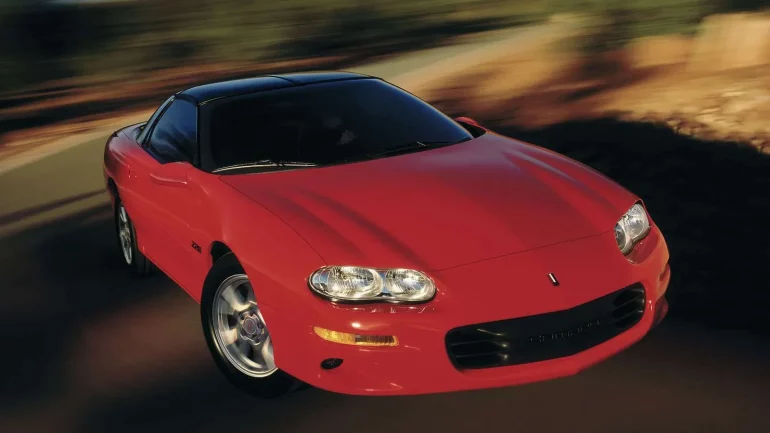
Camaro (4th Gen) Basics
Production: 1992 – 2002
Designer: John Cafaro (1988, 1989), Chuck Jordan (1989)
Body style: 2-door t-top, 2-door liftback, 2-door conv.
Layout: FR
Platform: F-body
Engine: 3.4 L L32 V6
Engine: 3.8 L L36 V6
Engine: 5.7 L LT1 V8
Engine: 5.7 L LT4 V8
Engine: 5.7 L LS1 V8
Trans: 4-speed auto
Trans: 5-speed manual
Trans: 6-speed manual
Wheelbase: 2,568 mm
Length: 4,907 mm - 4,915 mm
Width: 1,882 mm
Height: 1,300 - 1,321 mm
Curb weight: 1,340–1,456 kg
Did You Know
LS1 engine debut: The legendary LS1 engine first appeared in a Camaro in 1998, ushering in an era of modern power.
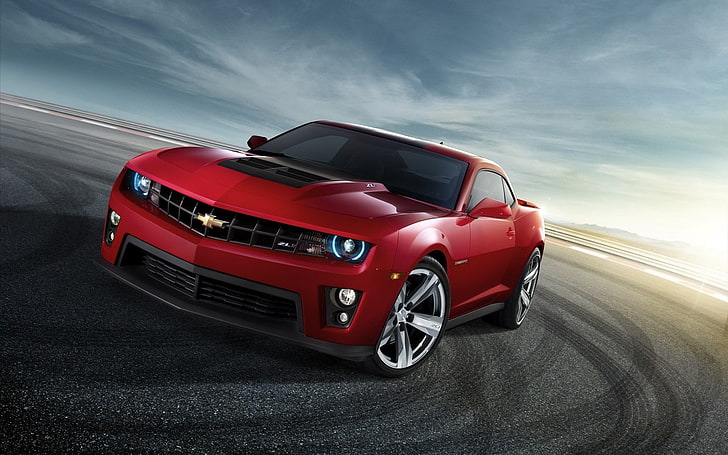
Camaro (5th Gen) Basics
Production: 2009–2015
Model years: 2010–2015
Designer: SangYup Lee (2005), Tom Peters (2007)
Body style: 2-dr coupé/conv.
Layout: FR
Platform: GM Zeta platform
Engine: 3.6 L LLT V6 (2010–11)
Engine: 3.6 L LFX V6 (2012-15)
Engine: 5.3 L V8 S/C V8 (COPO)
Engine: 6.2 L LS3 V8 (Manual SS)
Engine: 6.2 L L99 V8 (Auto SS)
Engine: 6.2 L LSA S/C V8 (ZL1)
Engine: 7.0 L LS7 V8 (Z/28)
Trans: 6-speed 6L50 auto
Trans: 6-speed 6L80 auto
Trans: 6-speed 6L90 auto
Trans: 6-speed Aisin manual
Trans: 6-speed Tremec manual
Wheelbase: 112.3 in (2,852 mm)
Length: 190.4 in (4,840 mm)
Width: 75.5 in (1,920 mm)
Height: 54.2 in (1,380 mm)
Curb weight: 3,750 lb (1,700 kg)
Did You Know
After an eight-year hiatus, the Camaro came back with a bang, inspired by the classic first-gen design. The Camaro's starring role in "Transformers" reignited its popularity.
5th Generation Camaro (2010 - 2015)
After a hiatus that left enthusiasts yearning, the Chevrolet Camaro made a triumphant return in 2010, reigniting the passion for American muscle cars. The 5th generation Camaro wasn't just a revival; it was a renaissance, blending nostalgic elements from its storied past with cutting-edge technology and contemporary design. This generation marked a pivotal moment, reestablishing the Camaro as a symbol of performance, innovation, and unmistakable style.
A Design That Bridges Eras
The 2010-2015 Camaro was a masterclass in modern muscle car design, drawing heavily from the first-generation Camaros of the 1960s while infusing modern aesthetics and technology. Its exterior was a bold, sculptural interpretation of its ancestors, featuring aggressive, yet beautifully integrated lines, a wide stance, and a low profile that commanded attention and conveyed power. The design was both a homage and a statement, resonating with long-time enthusiasts and attracting a new generation of admirers.
Performance Reimagined
Under the hood, the 5th generation Camaro was all about power and poise. The lineup included a range of engines, from the efficient V6 to the thunderous V8 options in the SS and the later Z/28 and ZL1 models. The SS model, equipped with the 6.2-liter LS3 V8, became a benchmark for affordable performance, while the ZL1, introduced in 2012 with a supercharged LSA V8 engine, pushed the boundaries of what a factory muscle car could achieve, offering supercar-rivaling performance figures.
Chevrolet didn't just focus on straight-line speed; they engineered the Camaro to handle as well as it accelerated. With advanced chassis engineering, magnetic ride suspension in some models, and significantly improved brakes, the 5th generation Camaro offered a driving experience that was dynamic, responsive, and incredibly satisfying.
A Modern Muscle Car Interior
Inside, the Camaro melded retro-inspired design elements with modern comfort and technology. The cabin featured a distinctive, driver-focused cockpit with deep-set gauges, a nod to its predecessors, combined with contemporary materials and features like the available head-up display, premium audio systems, and advanced connectivity options. This blend of old and new created an environment that was both exhilarating and comfortable, perfect for the daily commute or a spirited drive on the open road.
Cultural Phenomenon and Legacy
The 5th generation Camaro quickly transcended its role as just another muscle car, becoming a cultural phenomenon. It starred in major films, appeared in countless TV shows, and became a fixture in pop culture, reinforcing its status as an icon of American automotive prowess. The Camaro's rebirth sparked renewed interest in the muscle car segment, reigniting rivalries and pushing the entire category to new heights.
The impact of the 5th generation Camaro extends beyond its commercial success and cultural footprint. It played a pivotal role in revitalizing the Chevrolet brand and the American auto industry at large, showcasing the capability, innovation, and spirit of the storied marque. Today, it is celebrated not only for its performance and design but also for its contribution to the renaissance of American muscle, inspiring a new era of enthusiasts and collectors.
Reflecting on the 5th generation Chevrolet Camaro offers a glimpse into a unique period in automotive history, where reverence for the past and the push towards the future met in a perfect storm of design, technology, and performance. It stands as a testament to the enduring appeal of the Camaro spirit, a fusion of heritage and innovation that continues to captivate hearts and minds across the globe.
6th Generation Camaro (2016 - 2024)
The 6th generation Chevrolet Camaro, spanning from 2016 to the present, represents a remarkable chapter in the storied legacy of this iconic American muscle car. This era has been characterized by an impressive fusion of the Camaro's rich heritage with the pinnacle of modern automotive technology, design, and performance. Embodying a more refined, athletic, and technologically advanced interpretation of its predecessors, the 6th generation Camaro has continued to captivate enthusiasts and critics alike, reinforcing its status as a symbol of contemporary muscle car excellence.
Evolutionary Design
The design of the 6th generation Camaro is a masterful blend of muscularity, elegance, and aerodynamic efficiency. While it draws inspiration from its predecessors, particularly the 1st and 5th generations, it presents a leaner, more sculpted aesthetic that advances the Camaro's iconic look into a new era. Every curve and line is meticulously crafted, not just for stylistic impact but also for functional aerodynamics, improving airflow and cooling while enhancing high-speed stability.
Powertrain Innovation
Chevrolet equipped the 6th generation Camaro with a diverse range of powertrains to cater to an array of preferences and driving styles. From the turbocharged 2.0-liter four-cylinder offering a balanced mix of performance and efficiency to the roaring 6.2-liter LT1 V8 in the SS model, the Camaro ensured thrilling performance across the board. The pinnacle of this generation's power was epitomized by the Camaro ZL1, boasting a supercharged 6.2-liter V8 engine, harnessing groundbreaking power and torque figures, thus setting new benchmarks in the muscle car segment.
Enhanced Dynamics and Technology
This generation of the Camaro took handling and drivability to unprecedented levels, with a lighter, stiffer platform shared with Cadillac's high-performance ATS. This not only improved agility and responsiveness but also enhanced overall driving dynamics, making the Camaro as competent on a twisting road as it is on the drag strip. Coupled with sophisticated technologies like Magnetic Ride Control, selectable drive modes, and an array of advanced safety features, the 6th generation Camaro offered a driving experience that was both exhilarating and secure.
Refined Interior and Connectivity
Inside, the Camaro transformed to offer a more driver-centric cabin, combining sportiness with modern comfort and technology. High-quality materials, improved ergonomics, and cutting-edge technology features, including Chevrolet's latest infotainment system, wireless connectivity, and customizable ambient lighting, created an environment that was both engaging and comfortable. The interior design, while paying homage to Camaros of the past, firmly positioned itself in the present with its advanced features and refined aesthetics.
Cultural Impact and Enduring Legacy
The 6th generation Camaro has continued to play a significant role in shaping the muscle car culture, embodying the spirit of American performance and innovation. It has garnered acclaim on racetracks, in car shows, and with automotive critics, securing its place as a modern classic. The Camaro's blend of performance, style, and technology has not only appealed to long-time enthusiasts but has also attracted a new generation of admirers, further cementing its legacy in the automotive world.
As we look back on this chapter of the Camaro story, the 6th generation stands as a testament to Chevrolet's commitment to pushing the boundaries of performance and design. It encapsulates a period of automotive evolution, where respect for heritage converges with the relentless pursuit of technological advancement. For those who appreciate the blend of classic muscle car aggression with the finesse of modern engineering, the 6th generation Chevrolet Camaro remains an emblem of peak automotive craftsmanship, destined to be celebrated for years to come.
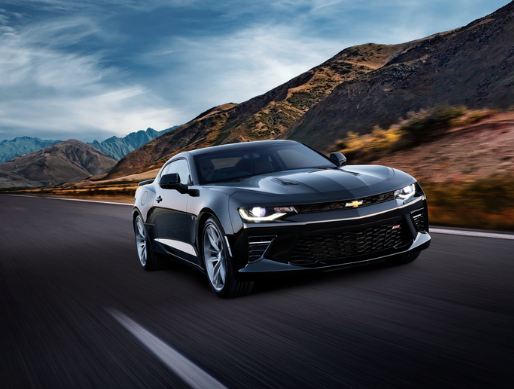
Camaro (6th Gen) Basics
Production: 2015–2023
Model years: 2016–2024
Designer: Hwasup Lee (2016-2019), John Mack
Body style: 2-dr coupé/conv.
Layout: FR
Platform: GM Alpha
Engine: 2.0 L LTG turbo I4 (LS, LT)
Engine: 3.6 L LGX V6 (LT)
Engine: 6.2 L LT1 V8 (LT1, SS)
Engine: 6.2 L LT4 S/C V8 (ZL1)
Trans: 6-speed manual (LS, LT)
Trans: 6-speed manual (SS, ZL1)
Trans: 8-speed auto (LS, LT)
Trans: 8-speed auto (SS)
Trans: 10-speed auto (LT V6)
Trans: 10-speed auto (LT1, SS)
Trans: 10-speed auto (ZL1)
Wheelbase: 2,812 mm
Length: 4,783 mm
Width: 1,897 mm
Height: 1,321 mm - 1,349 mm
Curb weight: 1,515 kg - 1733kg
Length: 4,840 mm
Width: 1,920 mm
Height: 1,380 mm
Curb weight: 1,700 kg
Did You Know
Significant weight reductions make the sixth generation one of the best handling Camaros ever.
1LE track monster: The 1LE package brings racing pedigree to the Camaro, making it capable of amazing track times.
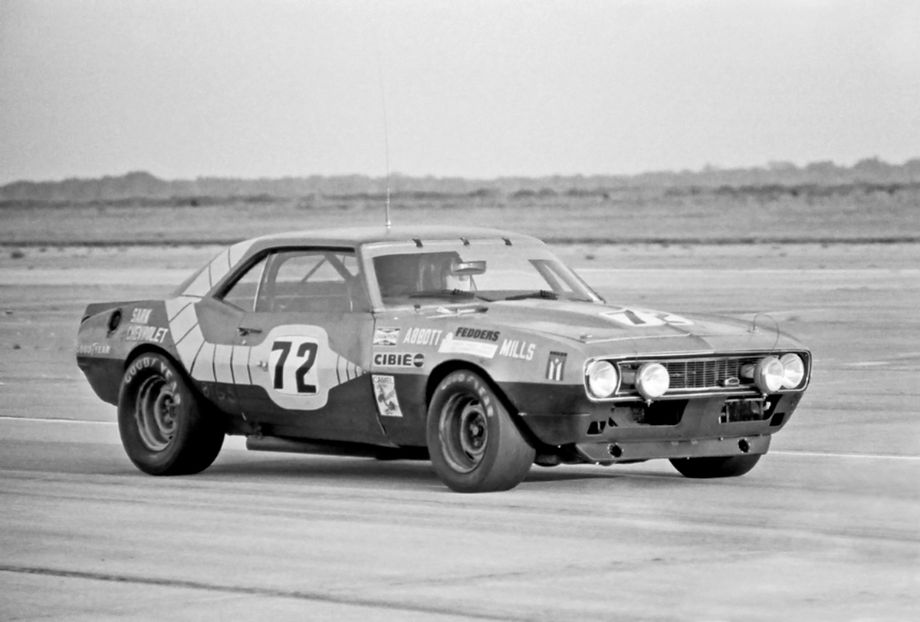
Chevrolet Camaro Model List
A full list of every Corvette model and variant ever made
1967 Camaro Rally Sport
1967 Camaro Rally Sport Super Sport (RS/SS)
1967 Camaro Rally Sport Z/28 (RS/Z/28)
1967 Camaro Standard Sport Coupe
1967 Camaro Super Sport
1967 Camaro Z/28
1968 Camaro Rally Sport
1968 Camaro Rally Sport Super Sport (RS/SS)
1968 Camaro Rally Sport Z/28 (RS/Z/28)
1968 Camaro Standard Sport Coupe
1968 Camaro Super Sport
1968 Camaro Z/28
1969 Camaro Rally Sport (Appearance Package)
1969 Camaro Rally Sport Super Sport (RS/SS)
1969 Camaro Rally Sport Z/28 (RS/Z/28) Coupe
1969 Camaro Standard Sport
1969 Camaro Super Sport
1969 Camaro Z/28 Coupe Only
1969 Camaro ZL1 – COPO Special Order
1970 Camaro "Super Sport"
1970 Camaro Rally Sport
1970 Camaro Standard
1970 Camaro Z28 Package
1971 Camaro "Super Sport"
1971 Camaro Rally Sport
1971 Camaro Standard
1971 Camaro Z28 Package
1972 Camaro "Super Sport"
1972 Camaro Rally Sport
1972 Camaro Standard
1972 Camaro Z28 Package
1973 Camaro Rally Sport
1973 Camaro Standard
1973 Camaro Type LT
1973 Camaro Z28 Package
1974 Camaro Standard
1974 Camaro Type LT
1974 Camaro Z28 Package
1975 Camaro Rally Sport
1975 Camaro Standard
1975 Camaro Type LT
1976 Camaro Rally Sport
1976 Camaro Standard
1976 Camaro Type LT
1977 Camaro Rally Sport
1977 Camaro Standard
1977 Camaro Type LT
1977 Camaro Z28 Package
1978 Camaro Rally Sport
1978 Camaro Standard
1978 Camaro Type LT
1978 Camaro Z28 Package
1979 Camaro Berlinetta
1979 Camaro Rally Sport
1979 Camaro Standard
1979 Camaro Z28 Package
1980 Camaro Berlinetta
1980 Camaro Rally Sport
1980 Camaro Standard
1980 Camaro Z28 Package
1981 Camaro Berlinetta
1981 Camaro Rally Sport
1981 Camaro Standard
1981 Camaro Z28 Package
1982 Camaro Berlinetta
1982 Camaro Sport Coupe
1982 Camaro Z28
1982 Camaro Z28 Indy Pace Car Replica
1983 Camaro Berlinetta
1983 Camaro Sport Coupe
1983 Camaro Z28
1984 Camaro Berlinetta
1984 Camaro Sport Coupe
1984 Camaro Z28
1985 Camaro Berlinetta
1985 Camaro IROC-Z
1985 Camaro RPO California IROC-Z
1985 Camaro Sport Coupe
1985 Camaro Z28
1986 Camaro Berlinetta
1986 Camaro IROC-Z
1986 Camaro Sport Coupe
1986 Camaro Z28
1987 Camaro IROC-Z
1987 Camaro LT
1987 Camaro Sport Coupe
1987 Camaro Z28
1988 Camaro IROC-Z
1988 Camaro Sport Coupe
1989 Camaro 1LE
1989 Camaro IROC-Z
1989 Camaro RS
1990 Camaro 1LE
1990 Camaro IROC-Z
1990 Camaro RS
1991 Camaro 1LE
1991 Camaro B4C
1991 Camaro IROC-Z
1991 Camaro RS
1992 Camaro 1LE
1992 Camaro B4C
1992 Camaro IROC-Z
1992 Camaro RS
1993 Camaro
1993 Camaro
1993 Camaro Z28
1993 Camaro Z28
1993 Camaro Z28 Indy Pace Car Replica
1994 Camaro
1994 Camaro Z28
1995 Camaro
1995 Camaro Z28
1996 Camaro
1996 Camaro SS
1996 Camaro Z28
1997 Camaro
1997 Camaro SS
1997 Camaro Z28
1998 Camaro
1998 Camaro SS
1998 Camaro Z28
1999 Camaro
1999 Camaro SS
1999 Camaro Z28
2000 Camaro
2000 Camaro SS
2000 Camaro Z28
2001 Camaro
2001 Camaro SS
2001 Camaro Z28
2002 Camaro
2002 Camaro SS
2002 Camaro Z28
2010 Camaro
2010 Camaro SLP ZL
2010 Camaro SS
2011 Camaro
2011 Camaro SLP ZL
2011 Camaro SS
2012 Camaro
2012 Camaro SLP ZL
2012 Camaro SS
2012 Camaro ZL-1
2013 Camaro
2013 Camaro Hot Wheels Edition
2013 Camaro SLP ZL
2013 Camaro SS
2013 Camaro ZL-1
2014 Camaro
2014 Camaro SLP ZL
2014 Camaro SS
2014 Camaro Z/28
2014 Camaro ZL-1
2015 Camaro
2015 Camaro SLP ZL
2015 Camaro SS
2015 Camaro Z/28
2015 Camaro ZL-1
2016 Camaro
2016 Camaro COPO
2016 Camaro SS
2017 Camaro
2017 Camaro COPO
2017 Camaro SS
2017 Camaro ZL1
2018 Camaro
2018 Camaro 50th Anniversary Hot Wheels
2018 Camaro COPO
2018 Camaro SS
2018 Camaro ZL1
2019 Camaro
2019 Camaro COPO
2019 Camaro SS
2019 Camaro ZL1
2020 Camaro
2020 Camaro COPO
2020 Camaro SS
2020 Camaro ZL1
2021 Camaro
2021 Camaro COPO
2021 Camaro SS
2021 Camaro ZL1
2022 Camaro
2022 Camaro COPO
2022 Camaro SS
2022 Camaro ZL1
2023 Camaro
2023 Camaro COPO
2023 Camaro SS
2023 Camaro ZL1
2024 Camaro ZL1
"A raucous, tire-smoking, supercharged love letter to the internal combustion engine."
2022 Camaro ZL1 Review by Car and Driver


